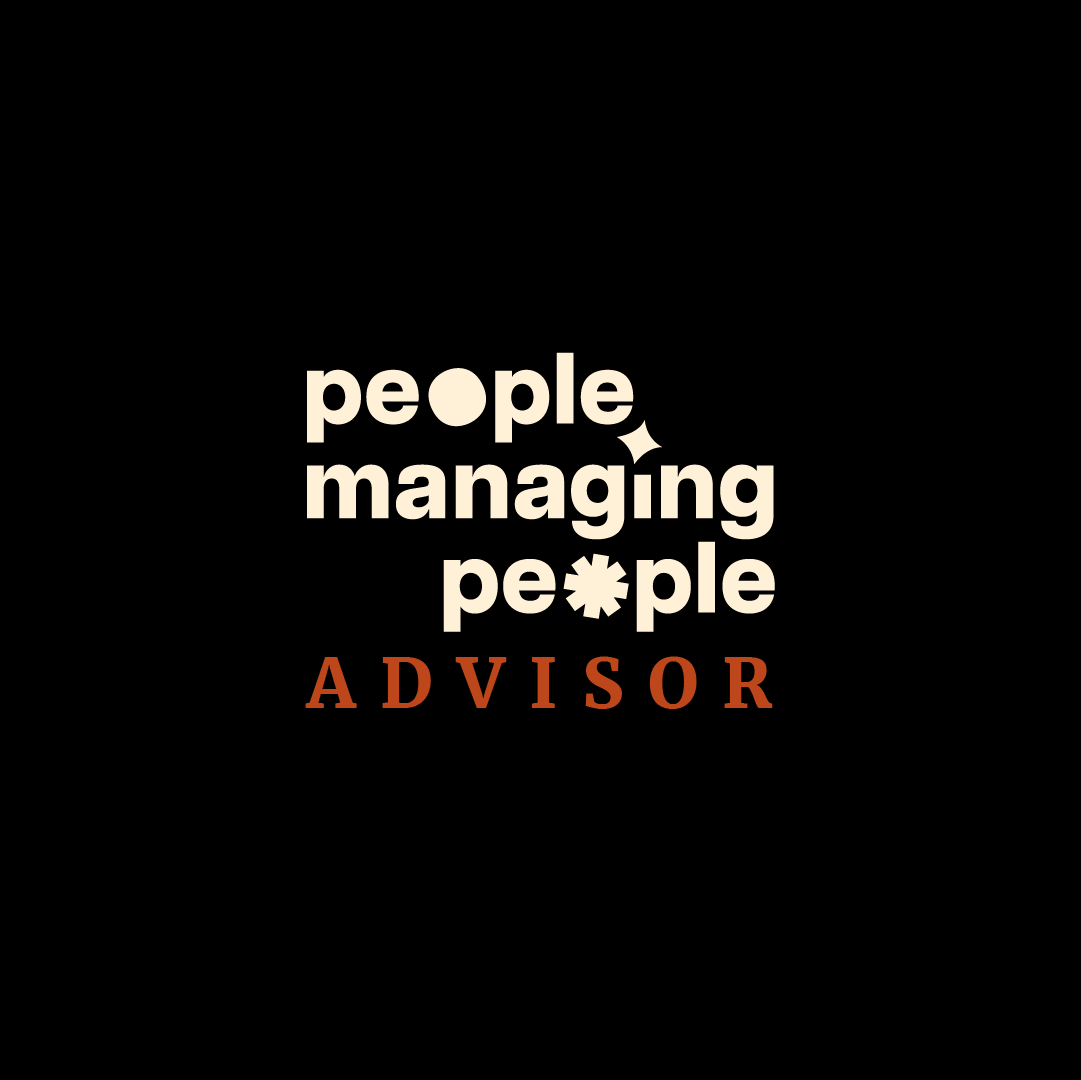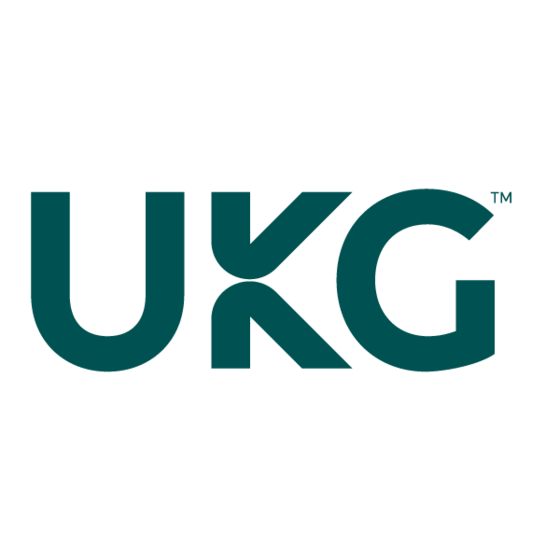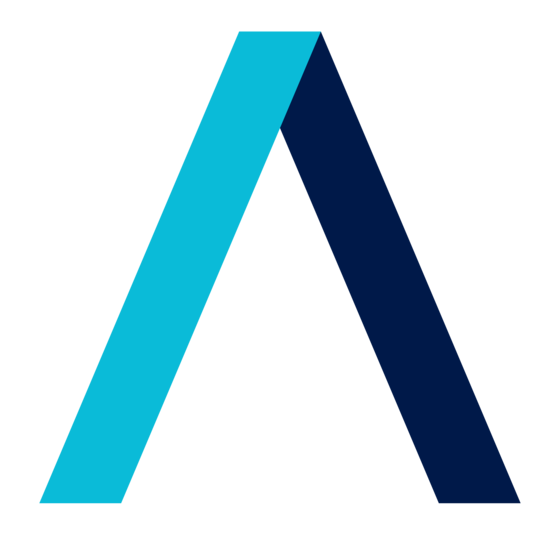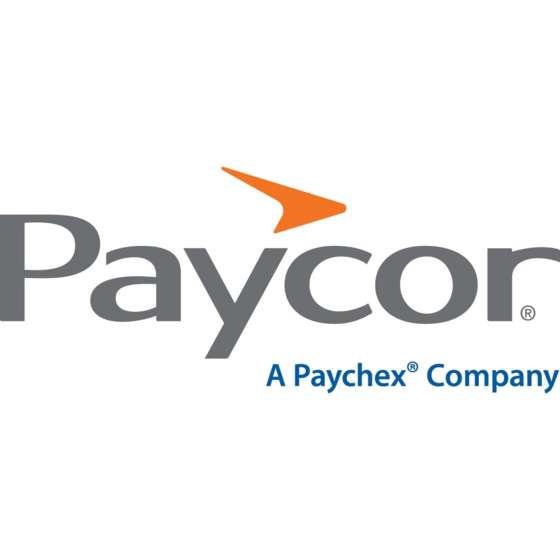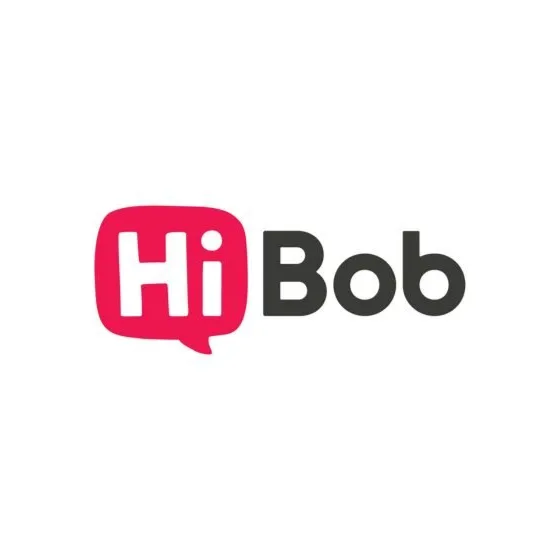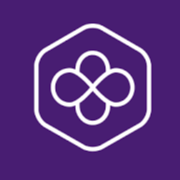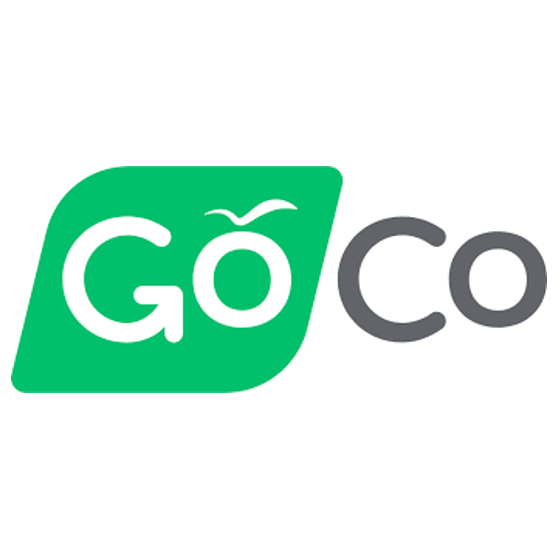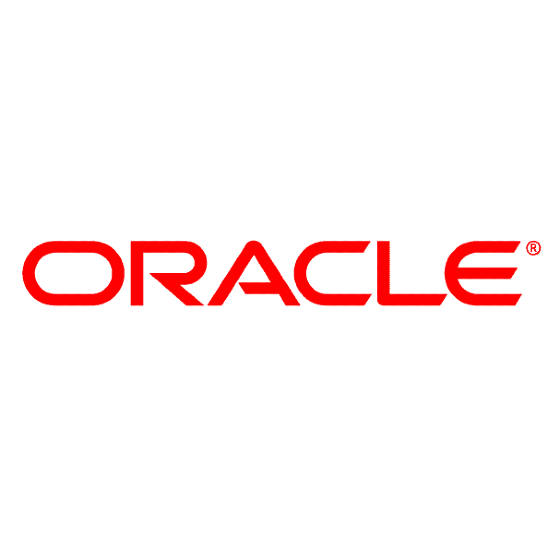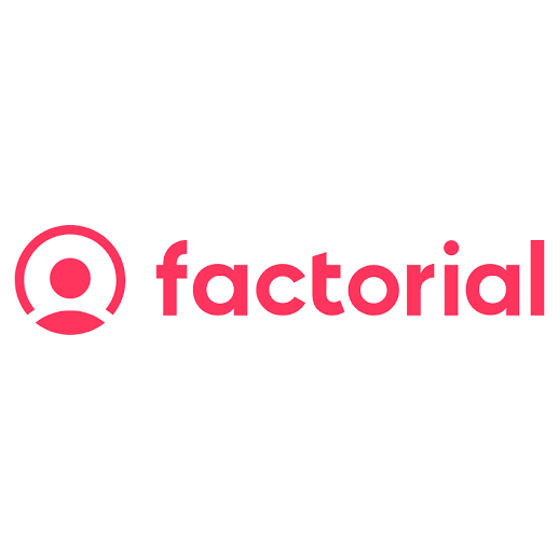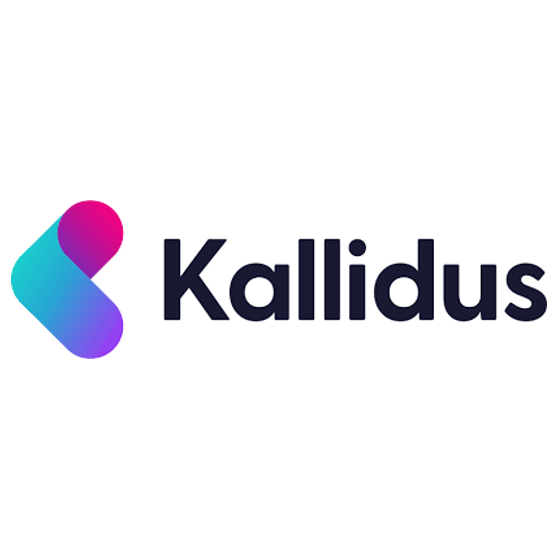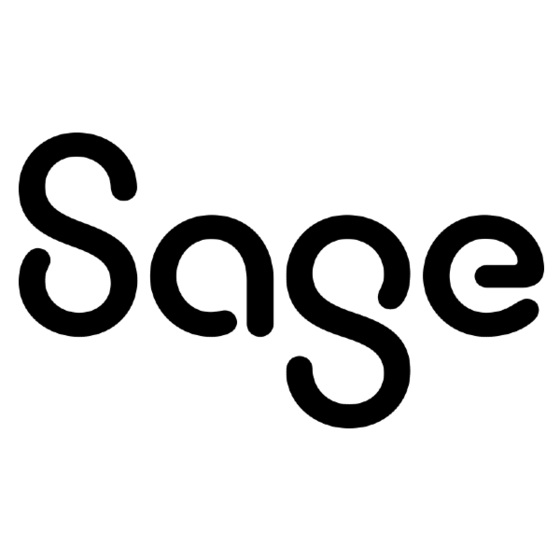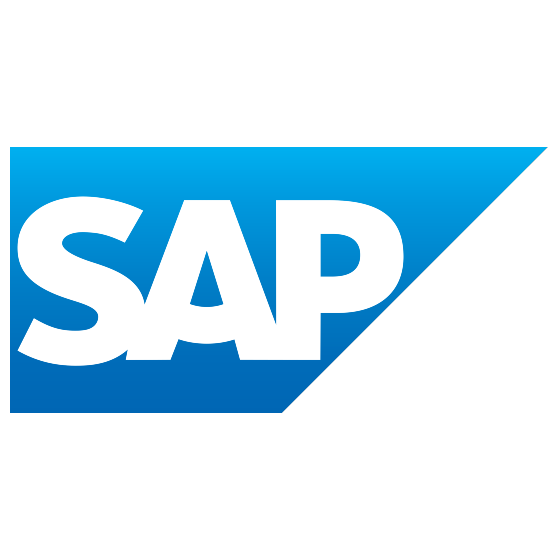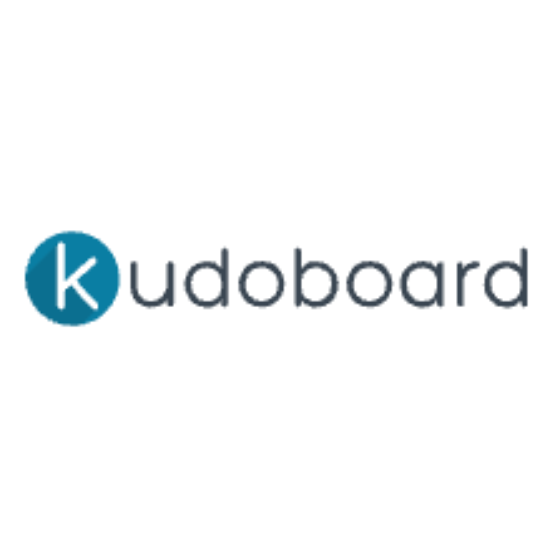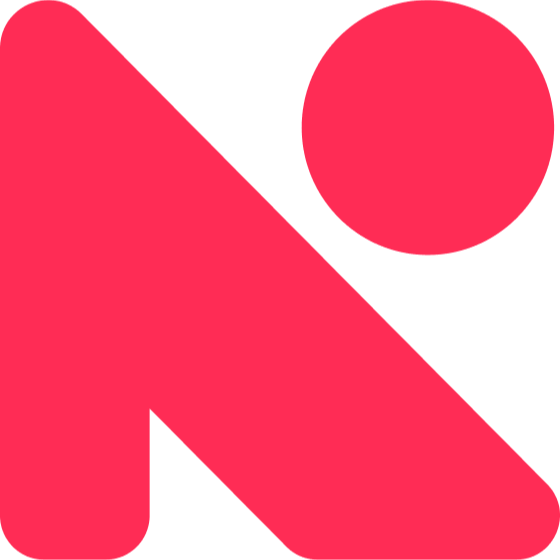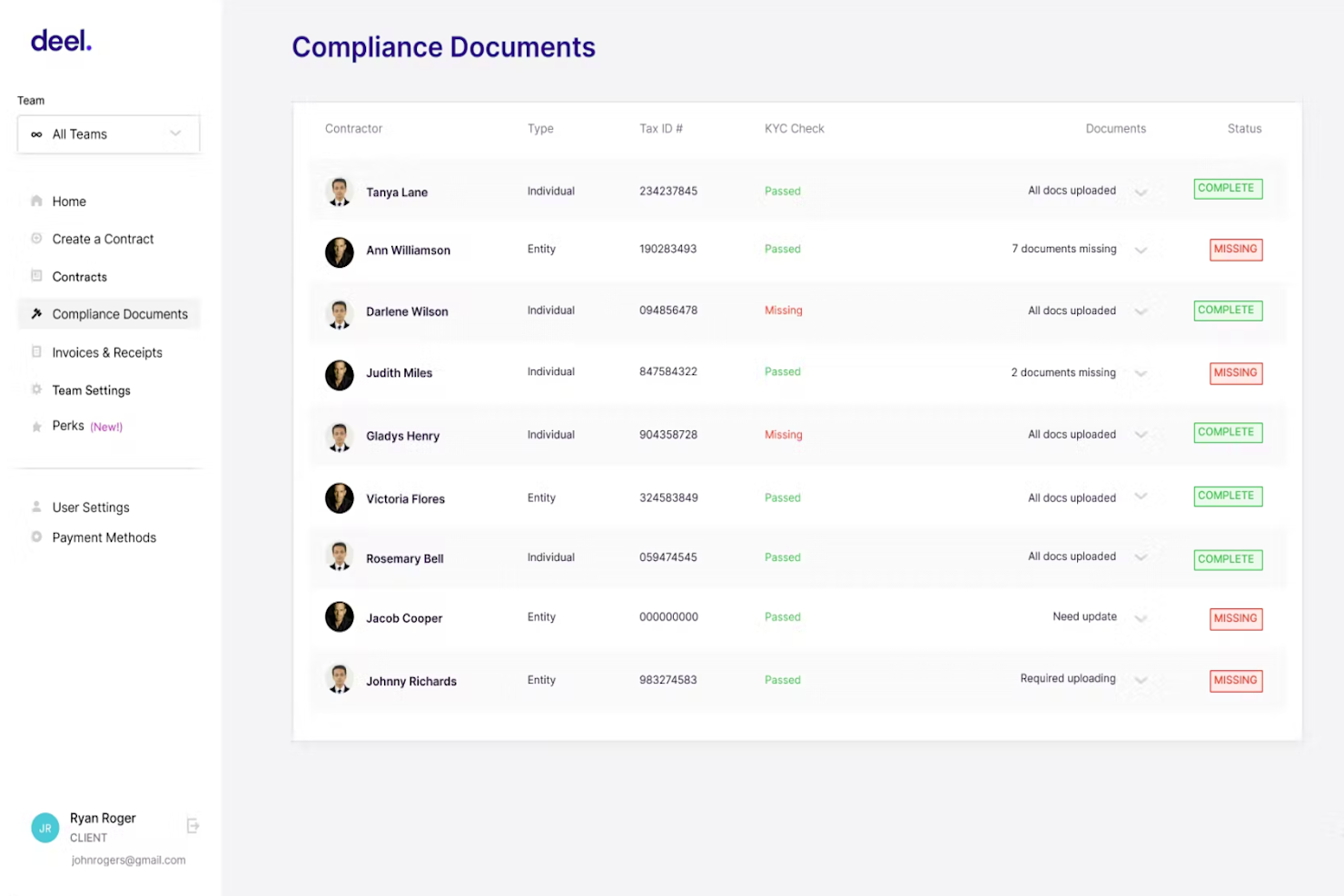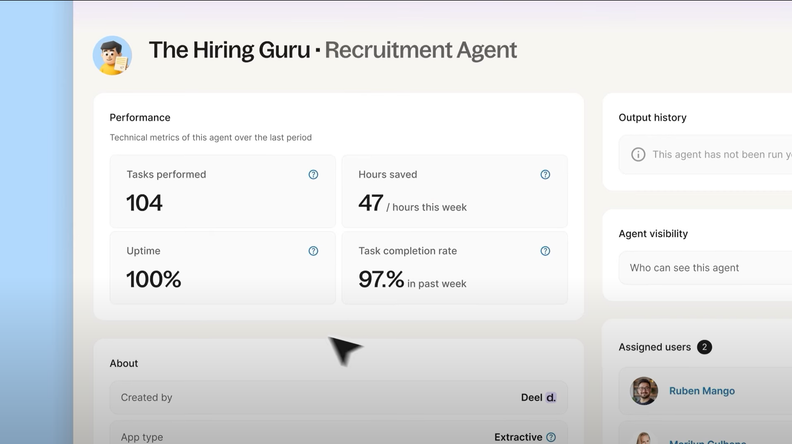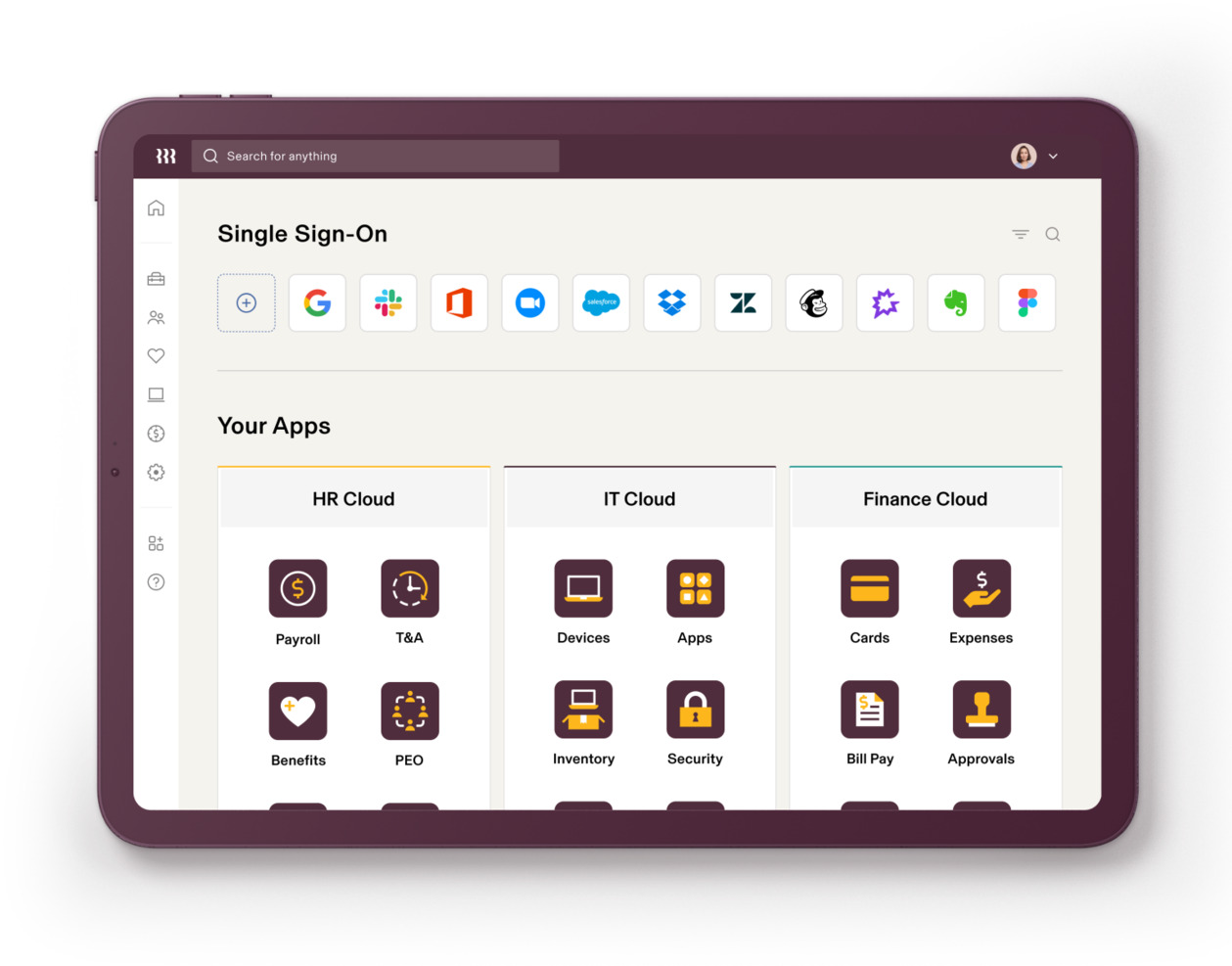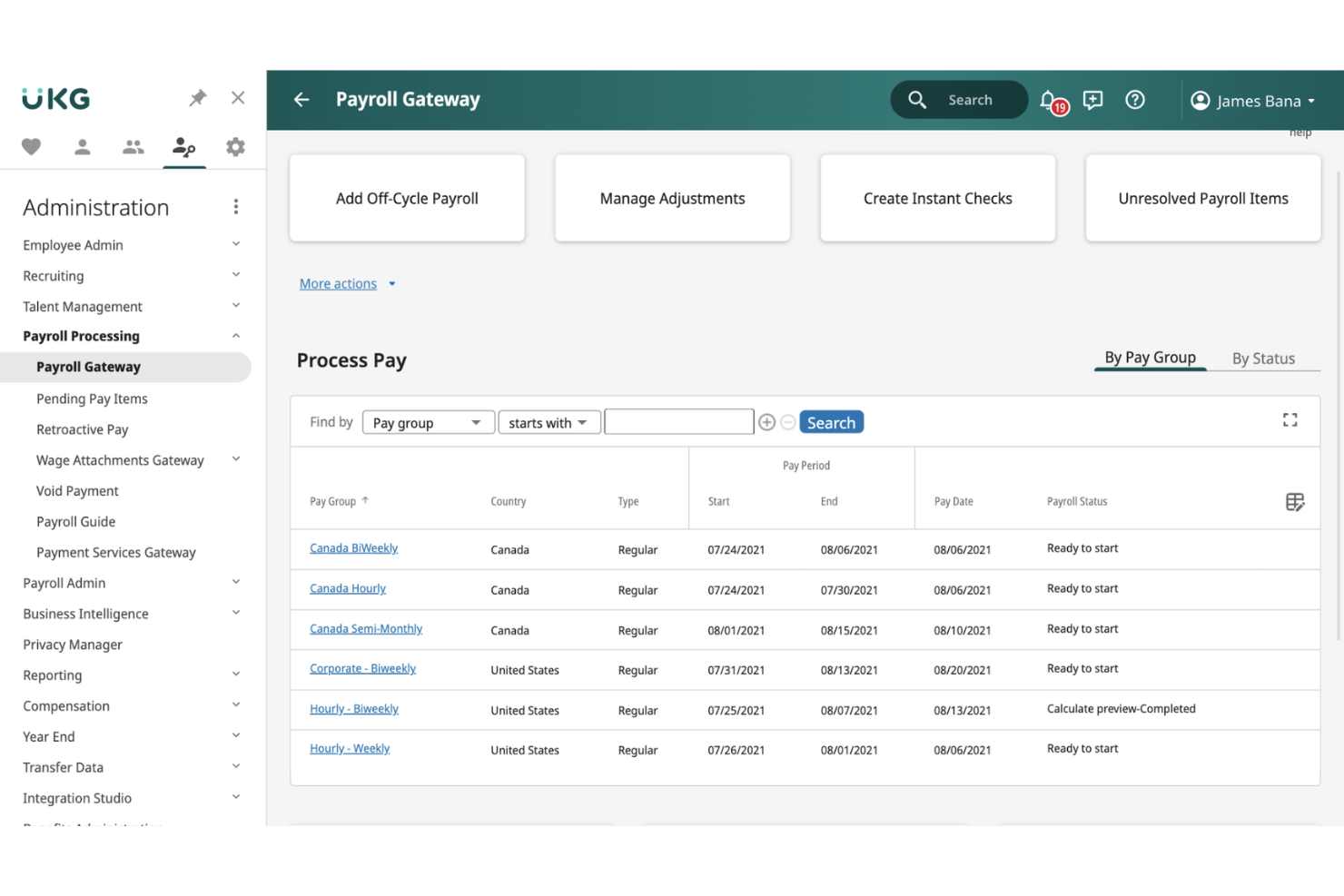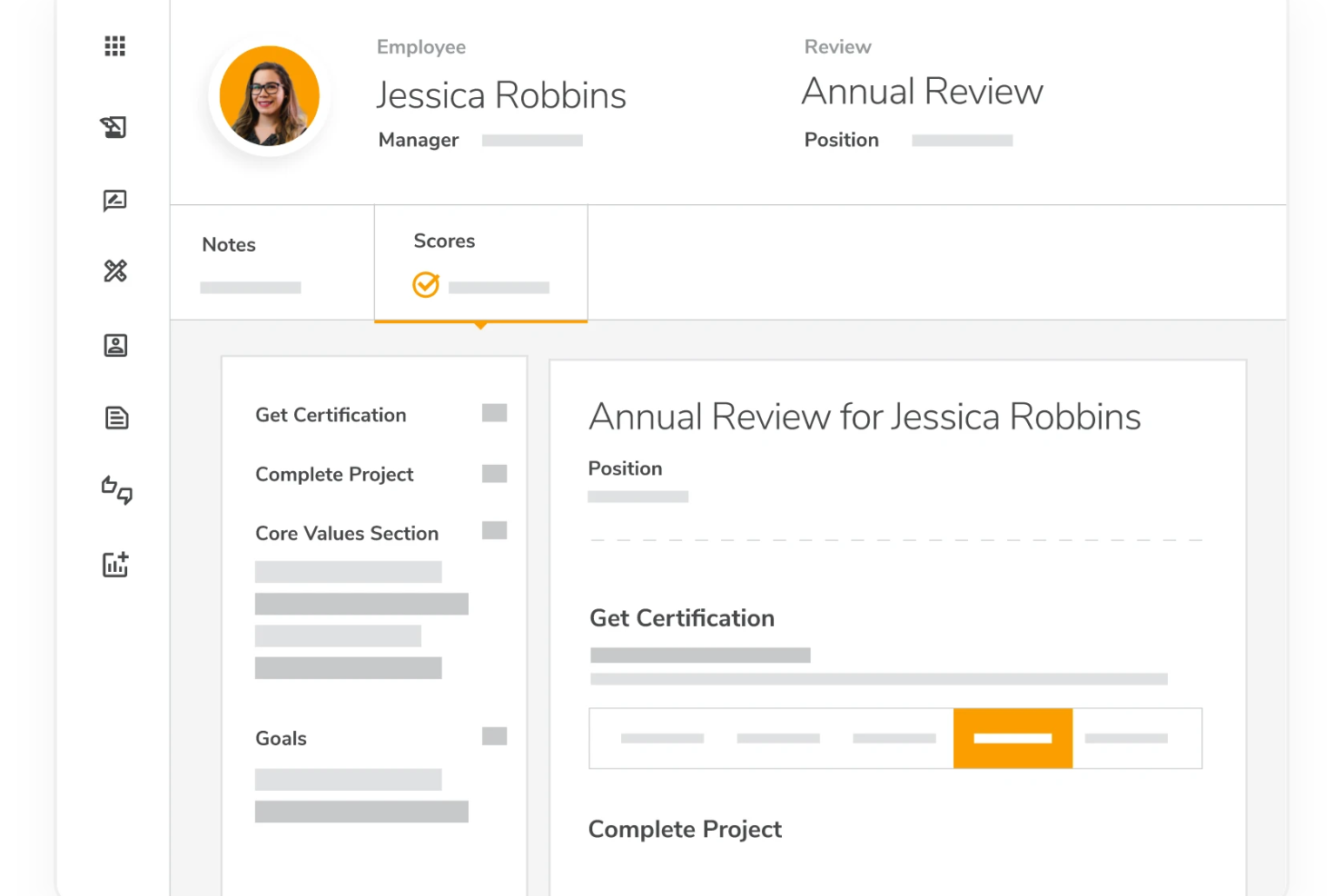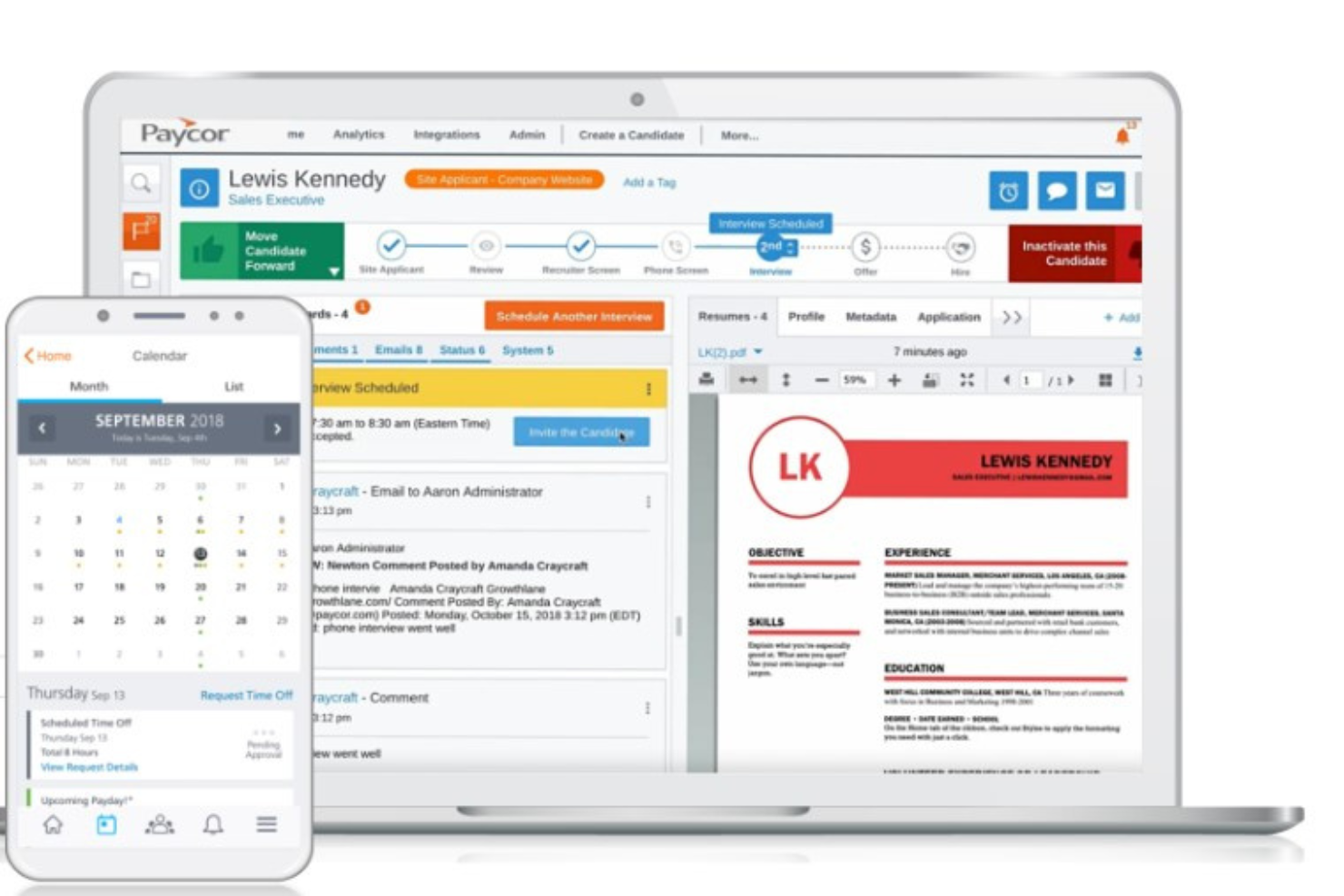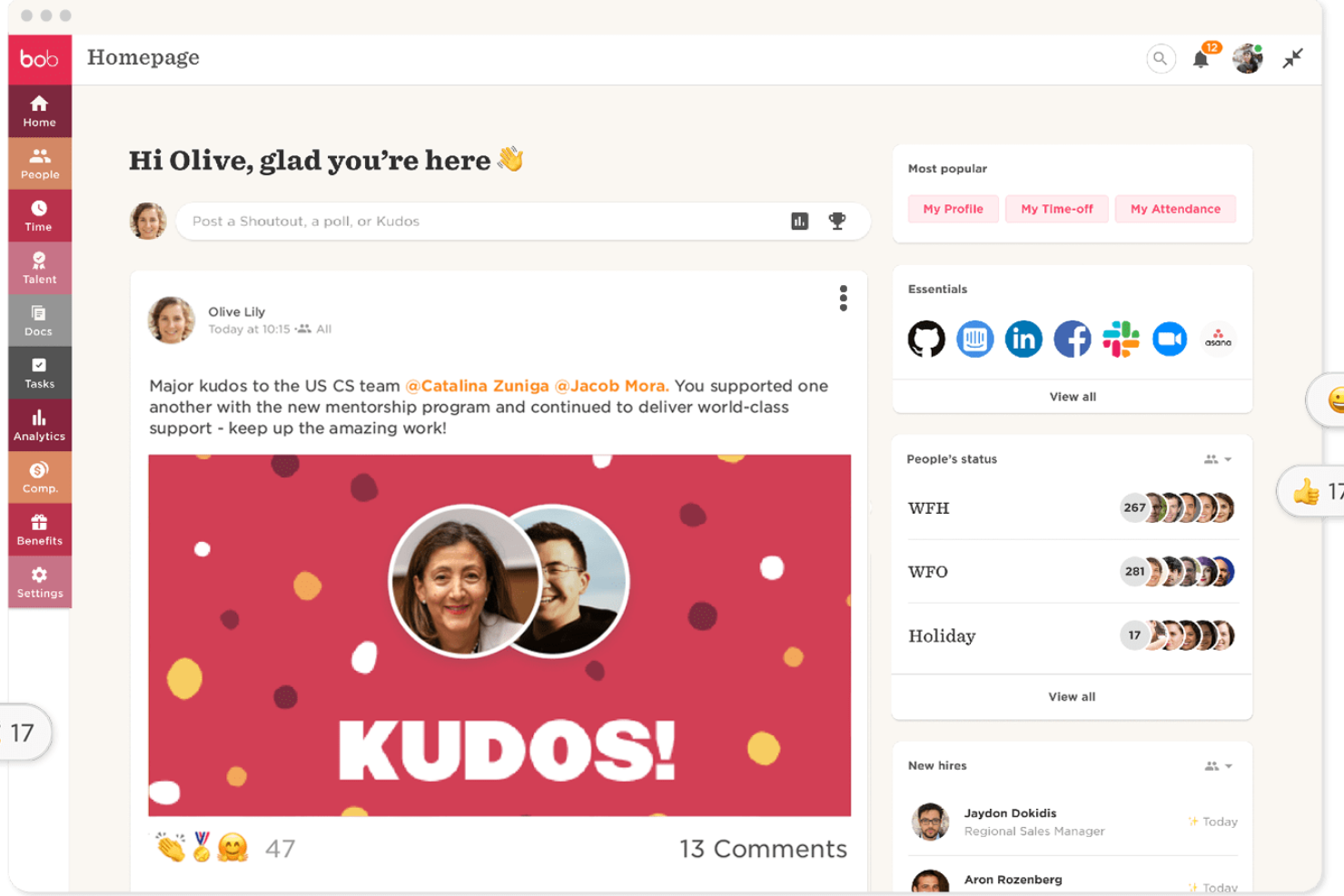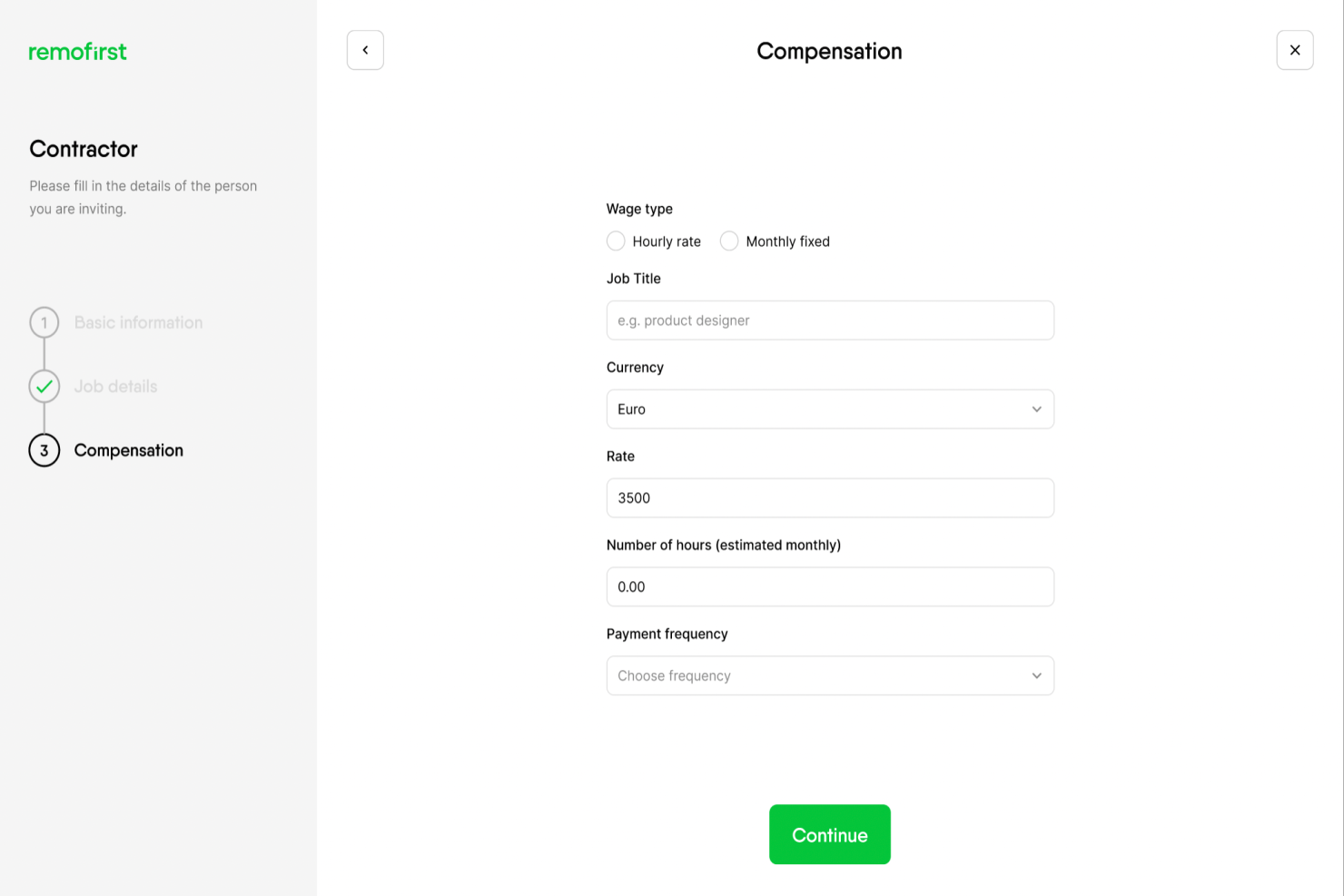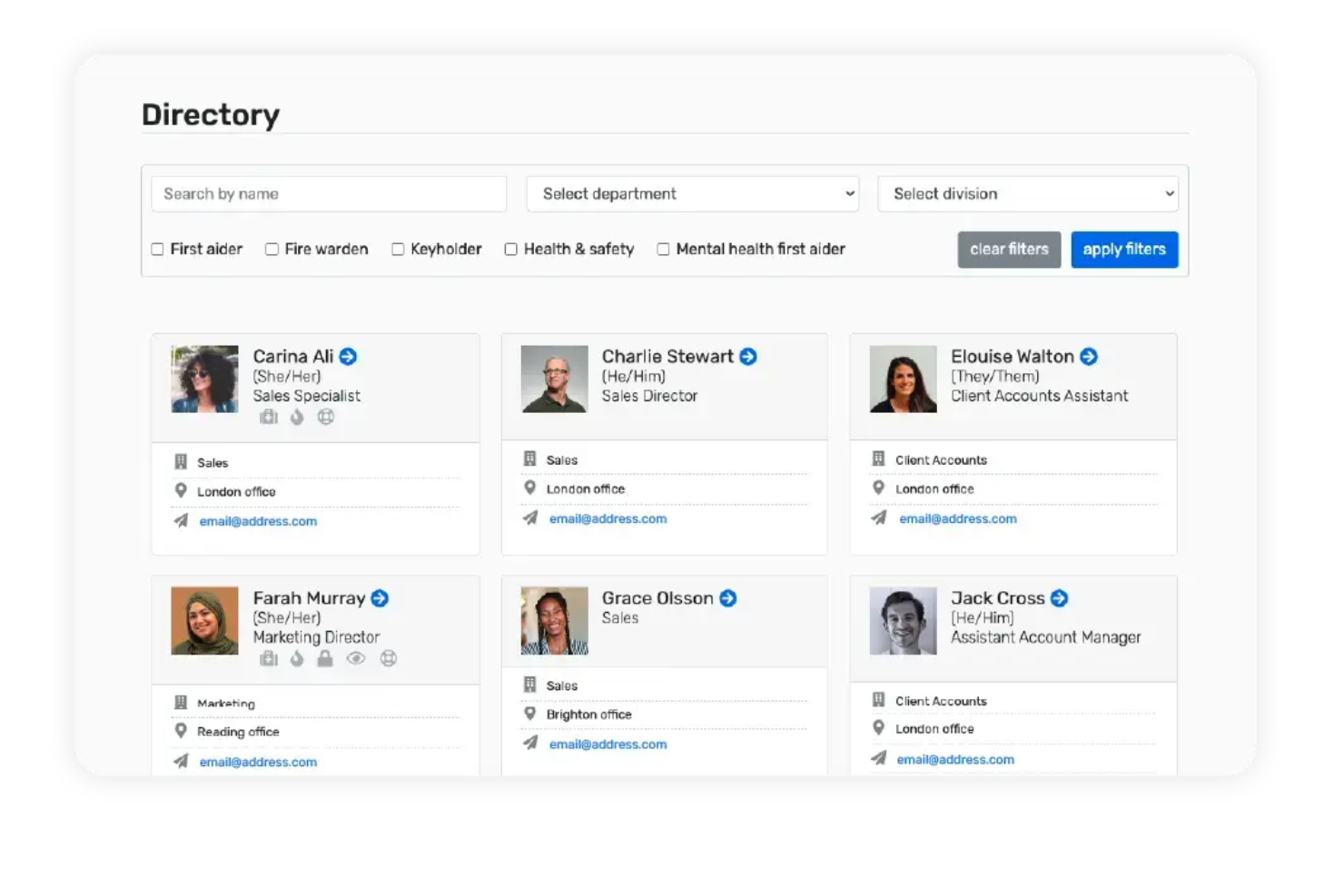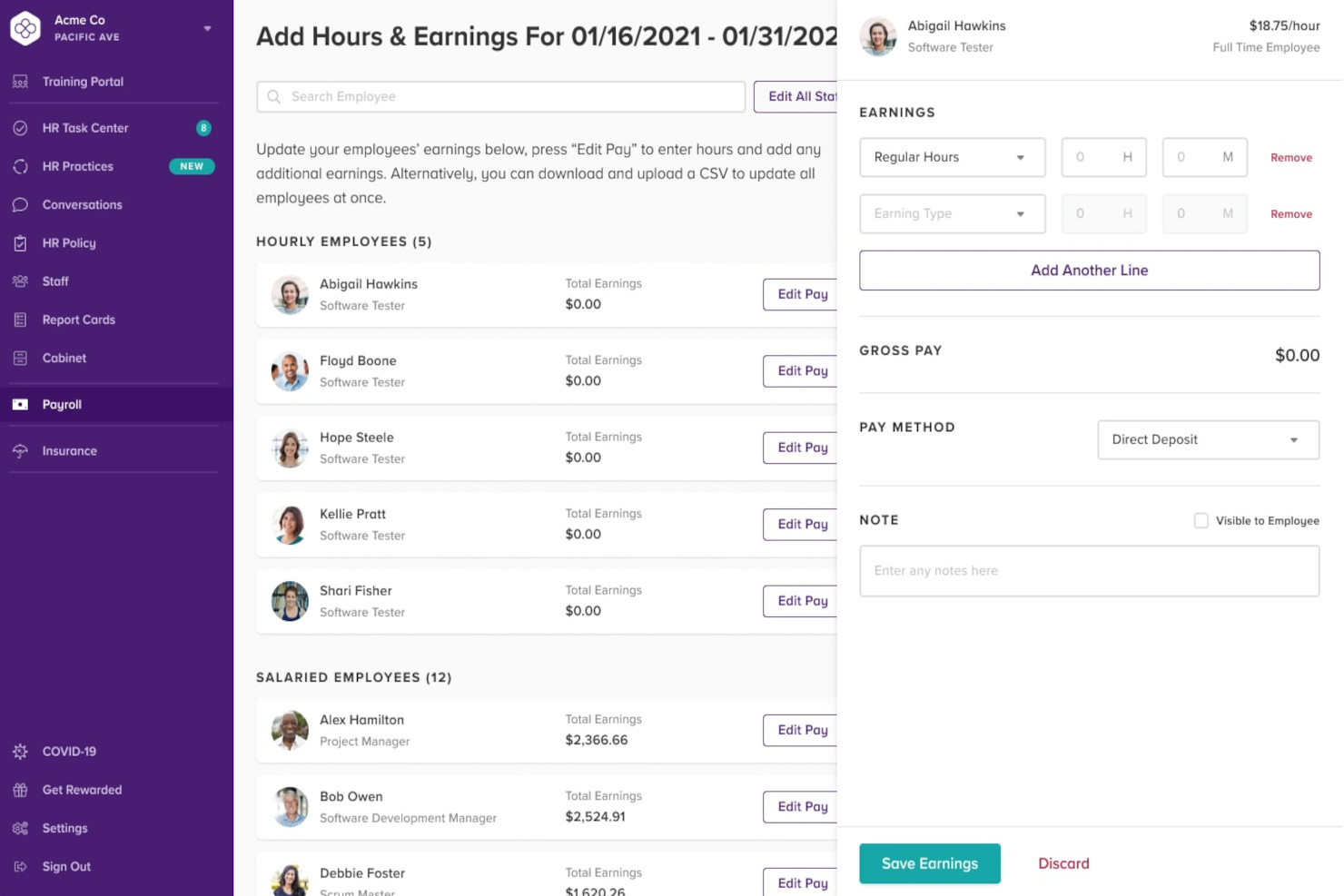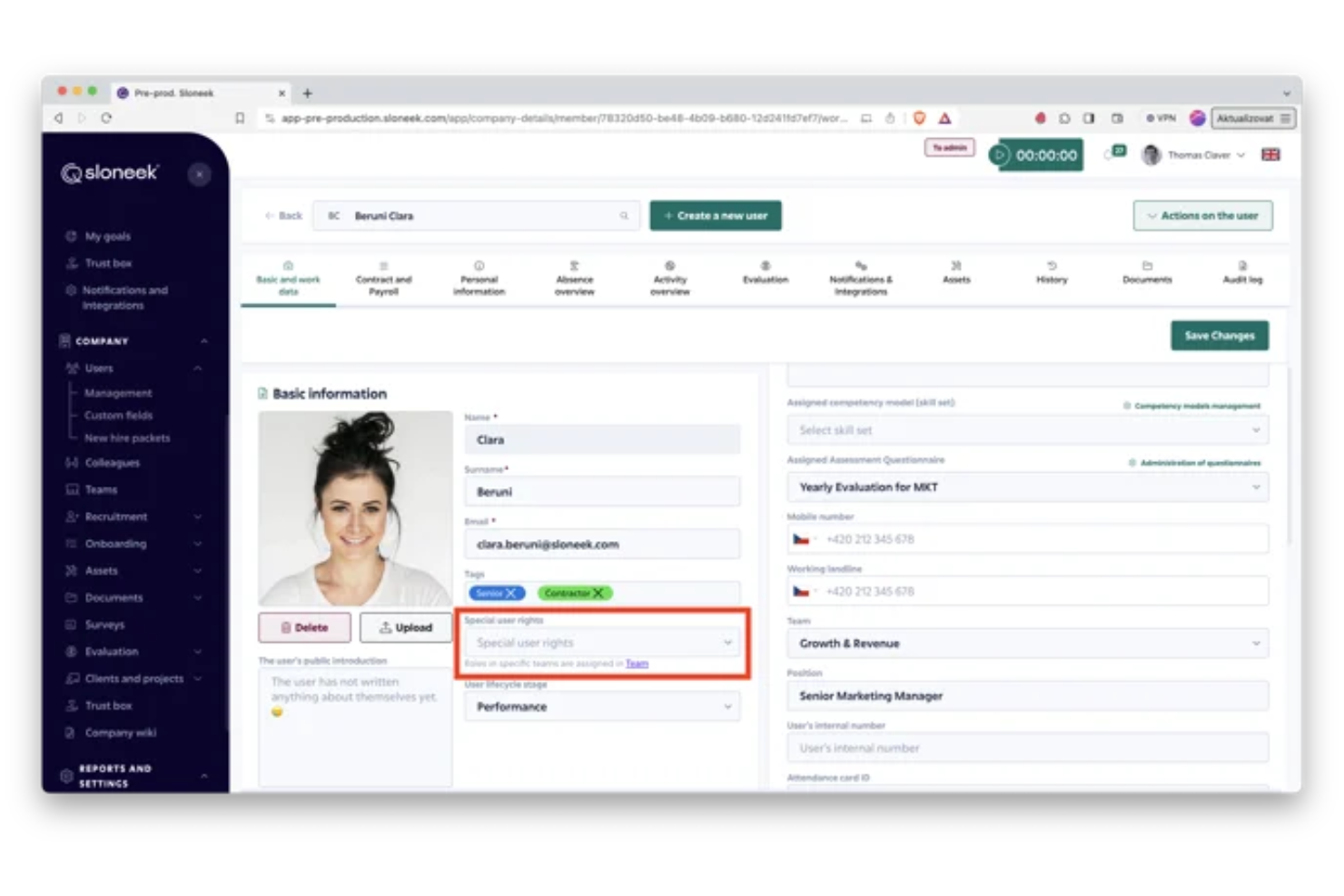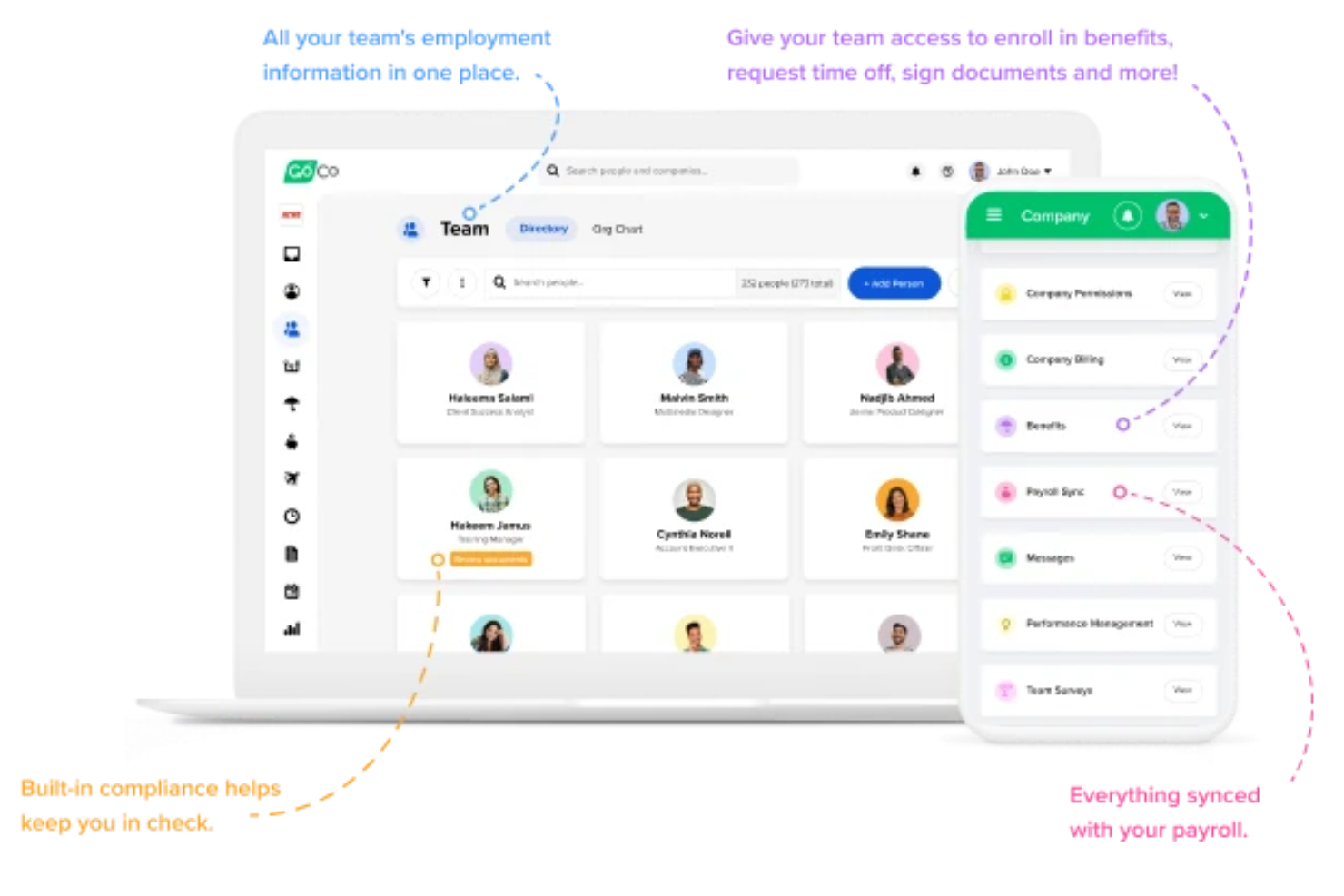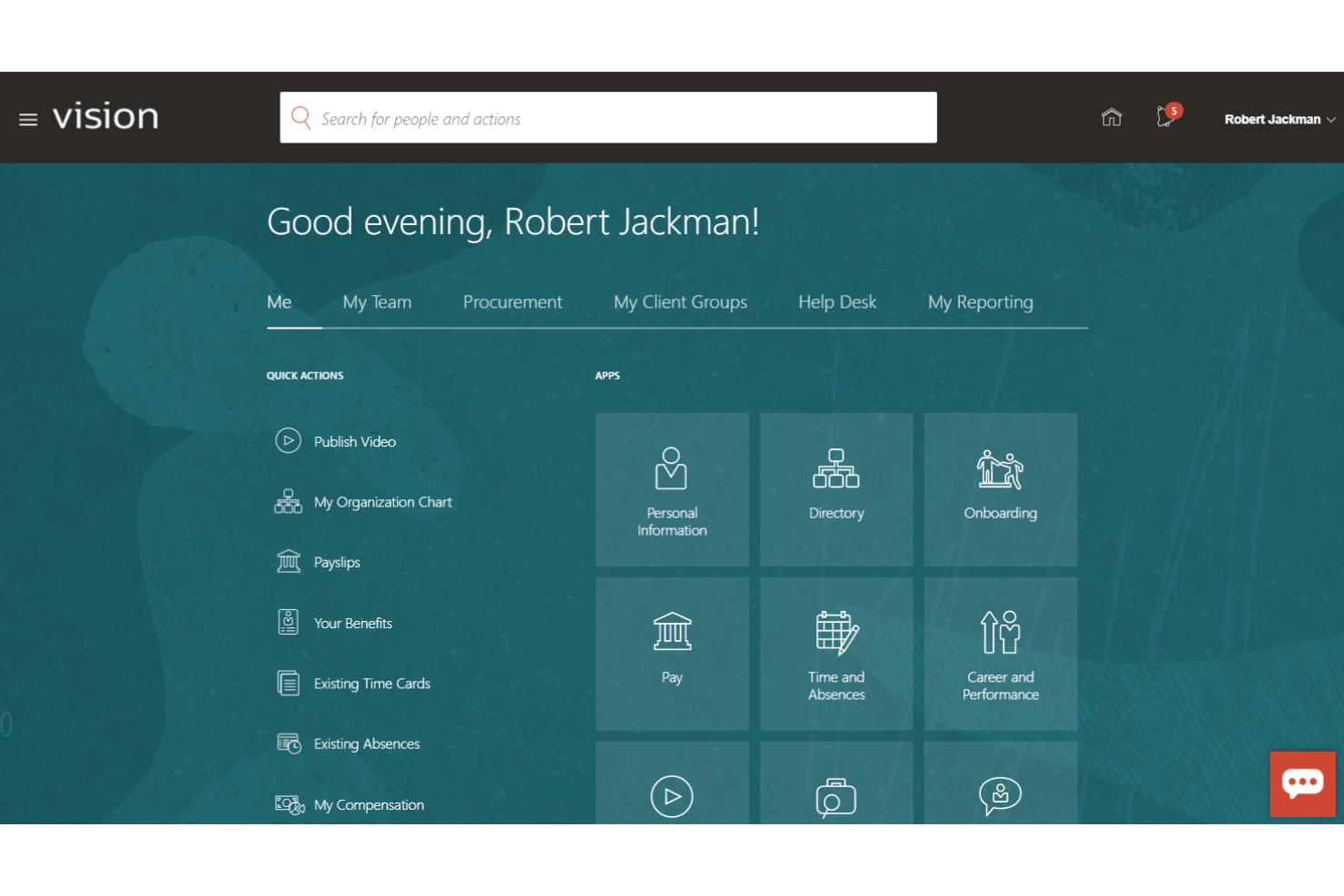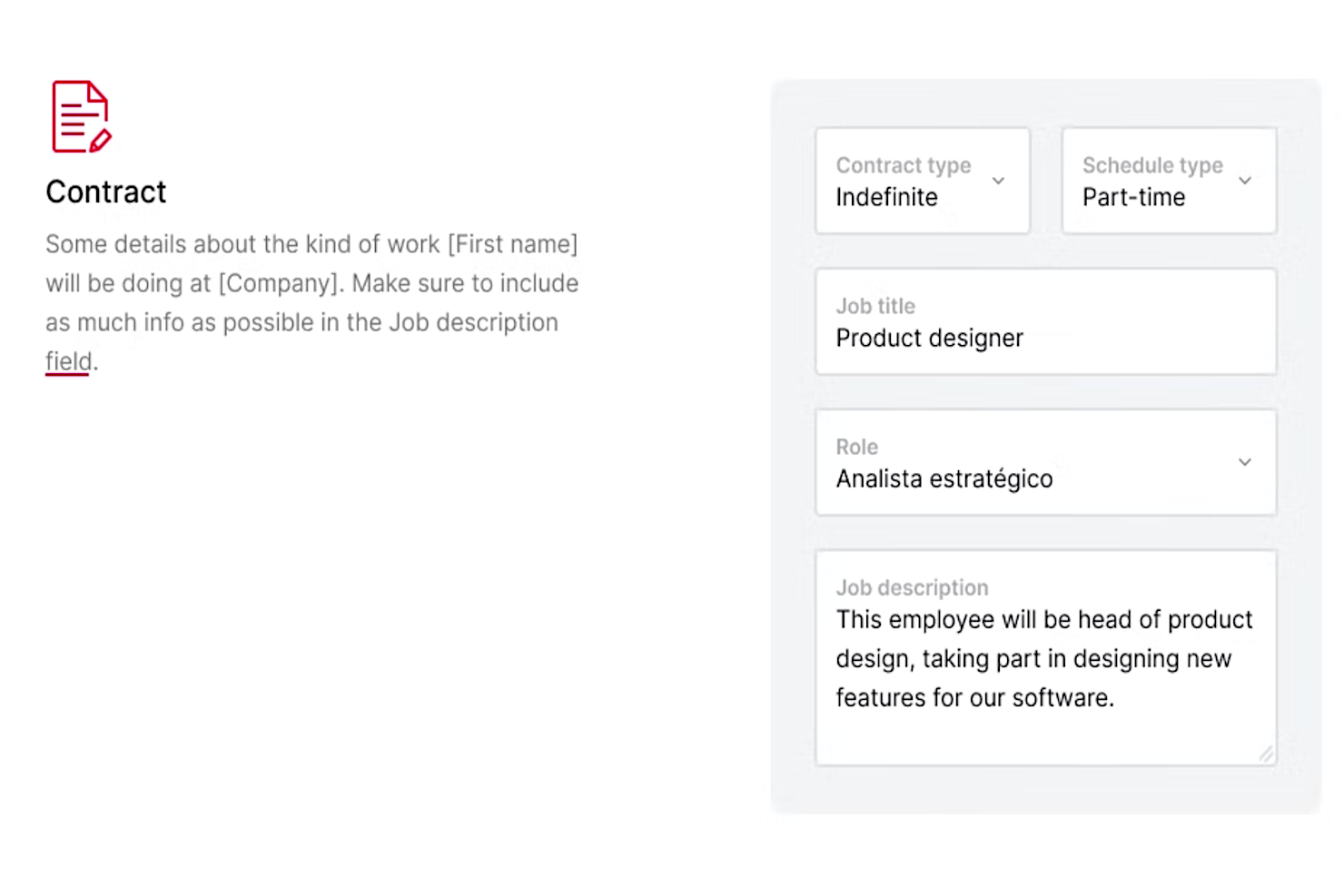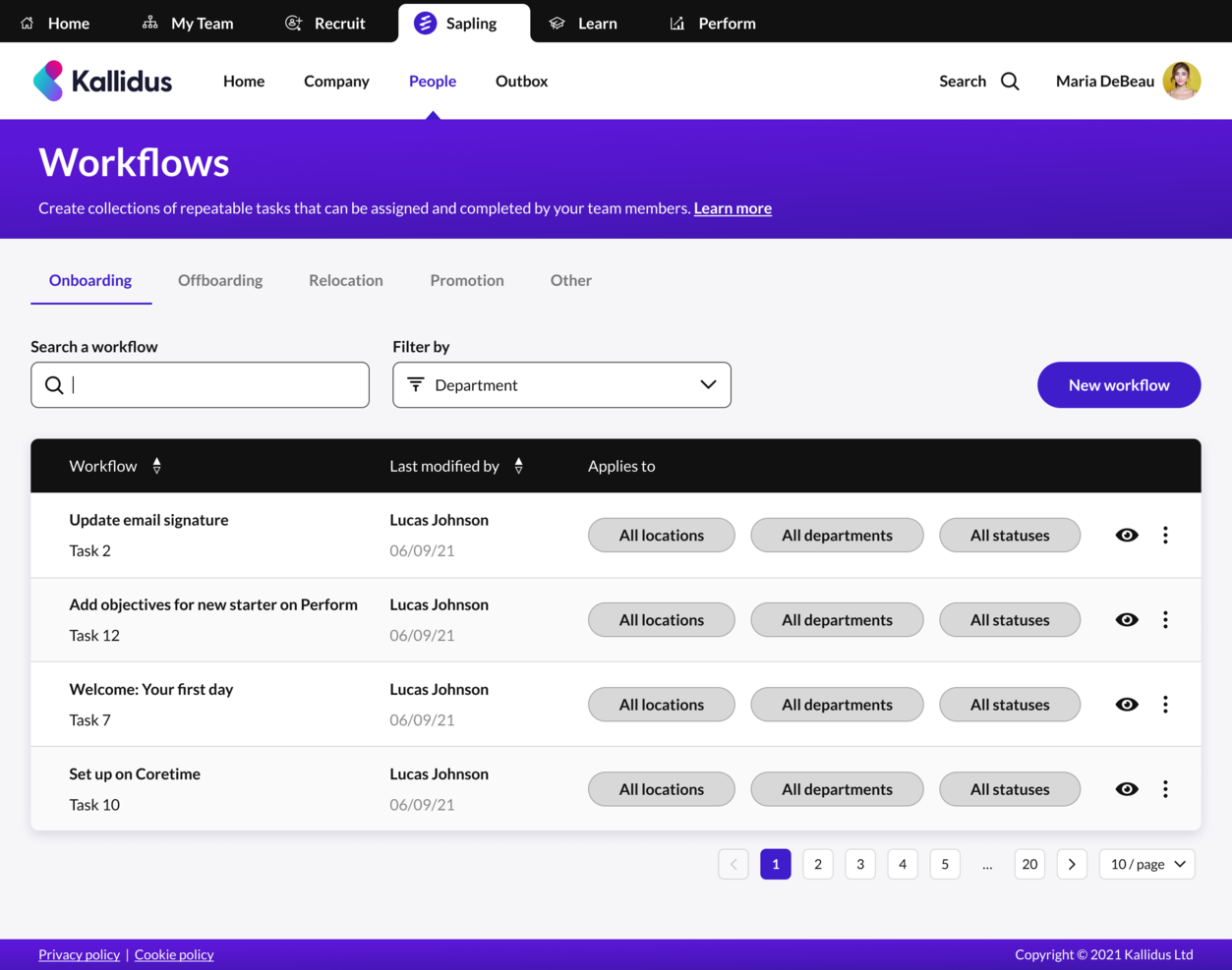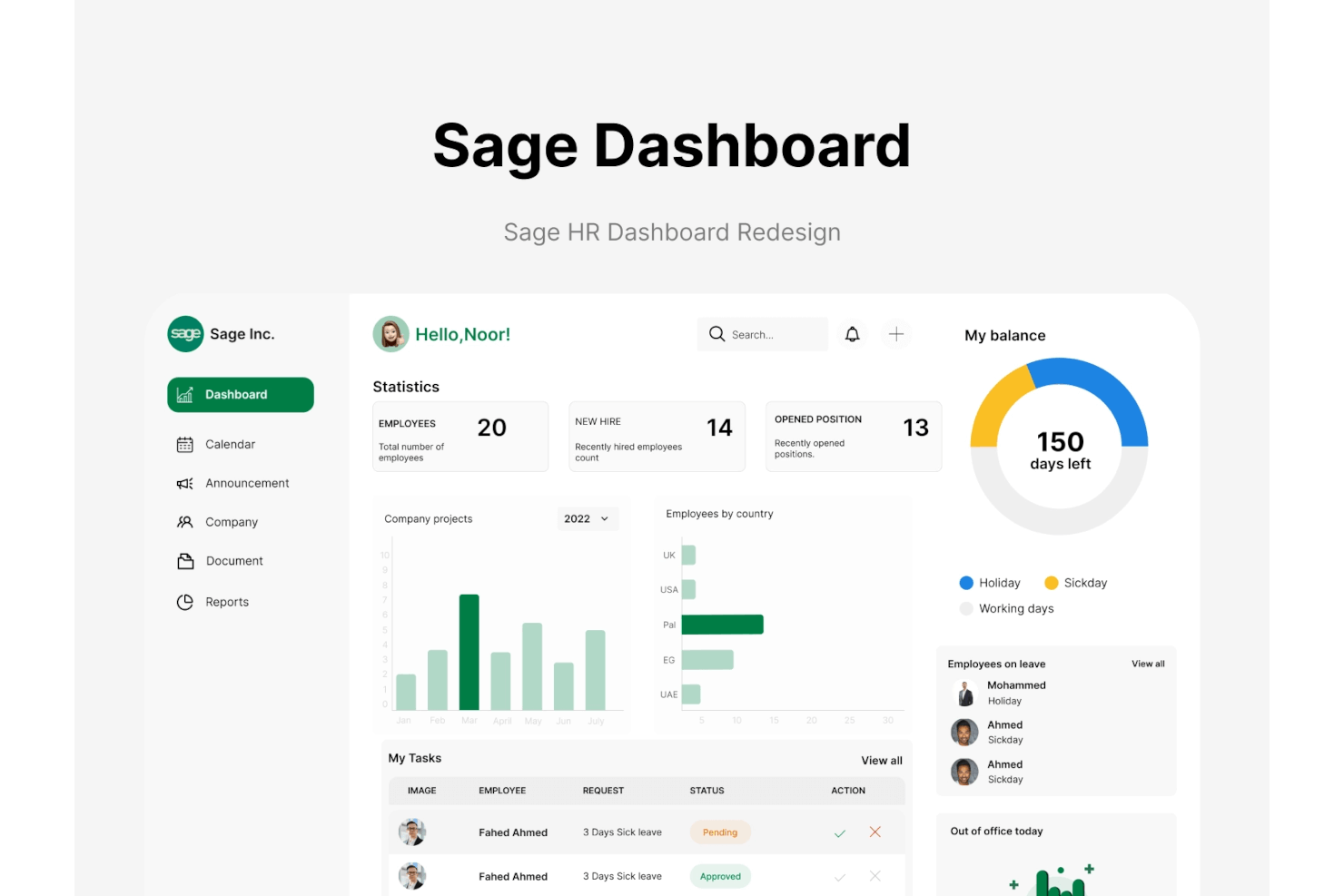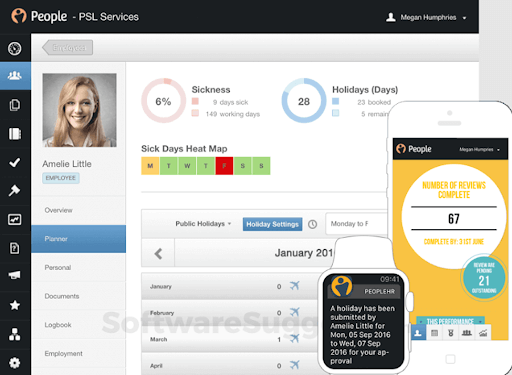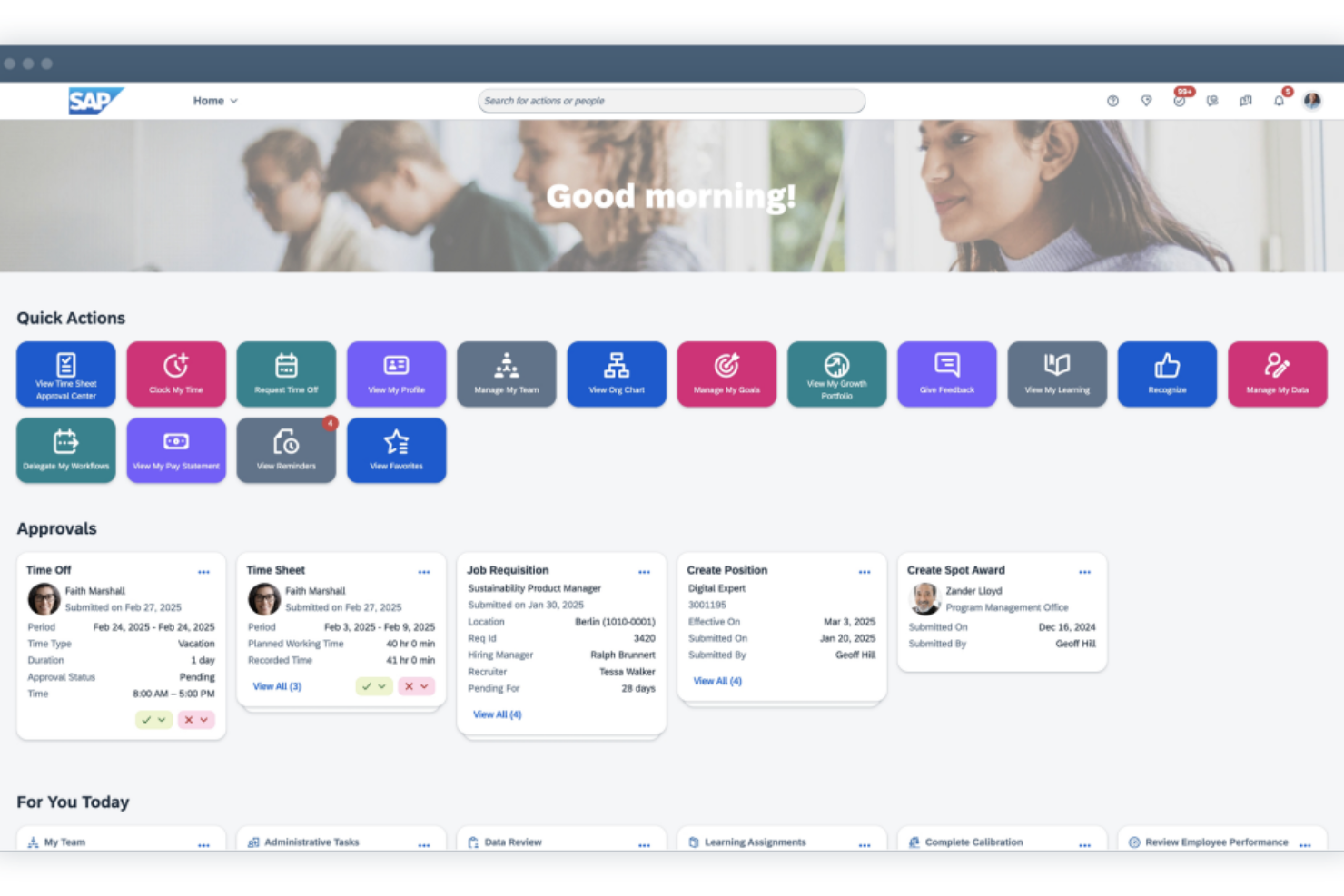20 Best HRMS Software Shortlist
Here's my pick of the 20 best software from the 40 tools reviewed.
The best HRMS (Human Resource Management System) software brings every aspect of people management into one integrated platform.
Managing HR manually or across disconnected tools creates inefficiencies and errors that drain valuable time and energy. The right HRMS automates repetitive tasks, centralizes employee data, and gives you real-time insights to support smarter, more strategic decision-making.
After reviewing dozens of platforms, I’ve narrowed down the top HRMS solutions for 2025 that are intuitive, scalable, and built to fit teams of all sizes.
Use this guide to easily compare pricing, features, pros + cons and use cases so you can make the best decision for your organization.
You Can Trust Our HR Software Reviews
We've been testing and reviewing HR software since 2019. As HR professionals ourselves, we know how critical and difficult it is to make the right decision when selecting software.
We invest in deep research to help our audience make better software purchasing decisions. We've tested more than 2,000 tools for different HR use cases and written over 1,000 comprehensive software reviews. Learn how we stay transparent, and take a look at our software review methodology.
Best HRMS Software: Pricing Comparison Chart
This comparison chart summarizes pricing details for my top human resource management system selections to help you find the best HR system for your budget and business needs.
| Tool | Best For | Trial Info | Price | ||
|---|---|---|---|---|---|
| 1 | Best for international teams | Free trial + demo available | From $29/month | Website | |
| 2 | Best for HR workflow automation | Free demo available | From $8/user/month (billed annually) | Website | |
| 3 | Best for industry-specific HR solutions | Free demo available | Pricing upon request | Website | |
| 4 | Best for benchmarking performance context | Free demo available | Pricing upon request | Website | |
| 5 | Best for enterprise organizations | 30-day free trial | Pricing upon request | Website | |
| 6 | Best for people analytics | Free demo available | Pricing upon request | Website | |
| 7 | Best for an employee community hub | 7-day free trial | From $6.19/user/month (billed annually) | Website | |
| 8 | Best for global payroll and EOR services | Free demo available | From $25 - $199/user/month | Website | |
| 9 | Best for UK-based small businesses | 14-day free trial | From $22/user/month | Website | |
| 10 | Best for global pay and compensation benchmarking | Free demo available | Pricing upon request | Website | |
| 11 | Best for small businesses | Free demo available | From $99/month | Website | |
| 12 | Best for performance and engagement tracking | Free demo available | Pricing upon request | Website | |
| 13 | Best for HR workflow automation | Free demo available | Pricing upon request | Website | |
| 14 | Best for the entire employee lifecycle | Free demo available | From $13/user/month, with a minimum of 1000 employees | Website | |
| 15 | Best for talent management and recruiting | 14-day free trial | From $4.50/user/month | Website | |
| 16 | Best for automating repeatable workflows | Free demo available | Pricing upon request | Website | |
| 17 | Best for benefits administration | 30-day free trial | From $6/employee/month | Website | |
| 18 | Best for skills‑based workforce visibility | Free demo available | Pricing upon request | Website | |
| 19 | Best for managing employee performance | 14-day free trial | From $5/user/month | Website | |
| 20 | Best for strategic workforce planning | Free trial + free demo available | Pricing upon request | Website |
-

Kudoboard
Visit WebsiteThis is an aggregated rating for this tool including ratings from Crozdesk users and ratings from other sites.4.8 -

Native Teams
Visit WebsiteThis is an aggregated rating for this tool including ratings from Crozdesk users and ratings from other sites.4.9 -

Rippling
Visit WebsiteThis is an aggregated rating for this tool including ratings from Crozdesk users and ratings from other sites.4.8
Best HRMS Software Reviews
To help you find the best human resource management system for you, I’ve summarized my top 10 choices in detail. Any one of these systems will help you manage your employee data with ease. Plus, there are 20 more HRMS options below if you want a few more options to vet.
Deel is a global HRMS solution for international teams. It eliminates borders from your talent pool, supporting over 150 countries where you can hire, manage, and pay any contractor or employee.
Why I picked Deel: Their HRMS platform offers more than just basic HR management tools. Instead, Deel serves as an employer of record for international employees and handles full payroll and benefits so you don't have to set up a foreign entity. You can make use of functions like contract generation, expense reimbursements, and off-cycle changes using Deel's self-serve platform. Their automatic onboarding saves time, and the analytics are great for monitoring your HR data. Overall, it scored very highly in the evaluation considerations for Usability.
For contractors, Deel helps you avoid contractor misclassification with legal-reviewed contracts and provides multiple withdrawal options. The platform provides a polished and consistent payment experience, using major payment providers like Wise, PayPal, Payoneer, and Revolut to offer withdrawals in the currency of the contractor’s choice, including cryptocurrency.
Deel Standout Features & Integrations:
Features include free HR software for businesses, global payroll, global mobility support, integrated Slack tools, and advanced integrations. Their global mobility service helps companies with visa sponsorship, allowing them to bring in candidates from abroad. The Slack plugins can be used to create an accessible organizational chart, provide self-service PTO management, and even track applicant referrals.
Integrations are available with major HR, ATS, and accounting platforms, including Ashby, BambooHR, Bob, Lever, Expensify, Greenhouse, NetSuite, Quickbooks, Workable, and Xero. Deel also complies with SOC2 and ISO 27001 security standards and has an Open API solution that allows developers to build their own connections with the Deel platform.
Pros and cons
Pros:
- Simplifies payroll using multiple currencies
- Managed by 200+ local legal and tax compliance experts
- Tailored for international organizations
Cons:
- No free trial available
- Overlapping plan features require custom pricing
New Product Updates from Deel
Introducing Deel AI Workforce
Deel has launched the AI Workforce, a set of specialized agents designed to handle repetitive HR, payroll, and compliance tasks with speed and accuracy. These AI agents don’t just assist—they execute tasks from start to finish. For more information, visit Deel's official site.
Rippling is an online HRMS system that helps organizations create a single source of truth for employee data and automate the manual work needed to manage human resources.
Why I picked Rippling: Companies can collect and store employee information with robust data collection and custom field capabilities. HR teams can then use the data to automate access to apps (Google Workspace, Salesforce, etc.), create policy rules (PTO, overtime, benefits), and more. Users can also create approval processes with advanced approval chains for hiring, terminations, and salary changes.
The HRMS' role-based permission system allows you to automatically give other people—like managers and junior admins—access to specific services and third-party apps based on their department or level. Users can also precisely control what information they can view and change—from salary to SSN to device OS. Smart rules allow admins to automatically provision new accounts and policies when employees get promoted or change departments.
Rippling Standout Features & Integrations:
Features include payroll, time and attendance, learning management, benefits, talent management, PEO, pulse surveys, and workforce analytics.
Integrations are available with 1Password, Asana, Atlassian, BrightHire, Checkr, Databricks, DocuSign, Dropbox, GitHub, Google Workspace, LinkedIn, Microsoft 365, Netsuite, Sage Intacct, Slack, Typeform, QuickBooks, Upwork, Zendesk, Zoom, and hundreds more.
Pros and cons
Pros:
- Unique IT management features make it standout
- Lots of native integrations
Cons:
- No free trial available
New Product Updates from Rippling
Rippling Now Integrates with Points North
Rippling's new integration with Points North automates certified payroll reporting, ensuring compliance with Davis-Bacon and prevailing-wage laws by synchronizing data in real time and reducing manual errors. More details at Rippling Blog.
UKG, or Ultimate Kronos Group, is a provider of human resources management systems focused on enhancing workplace experiences. It offers a suite of solutions for workforce management, payroll, and human capital management, supporting businesses in their HR processes.
Why I Picked UKG: I picked UKG as a top HRMS because it offers tailored solutions for organizations of all sizes, from small businesses to large enterprises. It provides workforce management, global payroll, and human capital management, ensuring your team can find the right tools to manage their workforce. UKG also delivers industry-specific solutions, addressing unique challenges in sectors like retail, healthcare, and manufacturing.
One of UKG's highlights is its AI-driven insights through the UKG Bryte AI platform. This technology uses extensive data to help you foster a positive workplace culture, enhancing employee engagement. By utilizing AI, UKG enables your company to boost productivity and employee satisfaction, making it a valuable asset for HR management.
UKG Standout Features & Integrations:
Features include a customer-centric approach with dedicated support and resources for successful implementation and collaboration. UKG also focuses on building long-term partnerships with clients, offering tools and insights that drive growth and operational efficiency.
Additionally, the platform provides valuable resources like the People Purpose Blog and Workforce Activity Report, offering insights into workplace trends and labor market conditions.
Integrations include Greenhouse, Lever, iCIMS, SmartRecruiters, JazzHR, Jobvite, Oracle Recruiting, Taleo, Active Directory, NetSuite, BCBS (Blue Cross Blue Shield), and Delta Dental.
Pros and cons
Pros:
- Strong compliance support for multi-region operations
- AI-powered insights for engagement and planning
- Wide range of HR, payroll, and workforce tools
Cons:
- No pricing mentioned
- Implementation may be complex for new teams
Mitratech Perform is an HRMS solution focused on talent development across the employee lifecycle. It combines modules for hiring, learning, performance, and workforce analytics under one roof.
Why I picked Mitratech Perform: I picked Mitratech Perform because it offers benchmarking analytics—you can compare your team’s performance and engagement against industry peers or internal cohorts (e.g. by tenure or department). This gives you context, not just raw scores. It’s rare for HR tools to let you see how your own employees stack up in a broader landscape.
Another reason is its check-in and review cadence flexibility: you can create custom check-ins and sequence multiple review steps, and the system tracks timelines so you see exactly where reviews are in process. This helps you avoid bottlenecks and keeps feedback cycles alive throughout the year.
Mitratech Perform Standout Features & Integrations:
Features include a competency library of more than 100 ready-to-use or customizable options that support role-specific performance measurement. Each competency can be weighted in reviews to reflect what’s most important for a given role. The platform also offers an engagement survey and feedback engine, which lets you create pulse or full surveys, segment responses, and track trends across groups or over time.
Integrations include ADP Workforce Now, Paylocity, BambooHR, Namely, UKG Pro, Azure, Okta, Google Workspace, SAML 2.0, Slack, Microsoft Teams, and Zoom.
Pros and cons
Pros:
- Benchmarking gives external performance context
- Real-time feedback journaling supports continuous input
- Competency library enhances role specificity
Cons:
- Multi-step workflows might seem complex initially
- Reporting can feel rigid for advanced needs
Paycor's HRMS platform is designed to help companies eliminate paper-based administrative tasks by automating common workflows. Their unified employee database acts as a single source of truth for all employees, and includes a knowledge base and an employee self-service portal. While it's technically an HCM (human capital management) platform, their software has all the features you'd expect from an HRMS system, and more.
Why I picked Paycor: I included Paycor in this list because of the flexible and modular nature of their software. Their HR system works for businesses of any size, from small-to-medium sized businesses all the way up to enterprise organizations. Paycor also prides themselves on tailoring their technology for each clients needs, rather than offering a one-size-fits-all solution.
Paycor Standout Features & Integrations:
Features are divided into five main modules: HR + Payroll Software, Talent Management, Workforce Management, Employee Experience, and Benefits Administration.
Within those modules, they offer features like automated time and attendance tracking, employee scheduling, payroll processing and expense management tools, integrated recruiting software with analytics, employee onboarding tools, pulse surveys, a learning management system, and talent development tools including performance management and compensation planning functions.
With so much data integrated at your fingertips, it's easy to manage your employee records at scale. You can create custom fields and notifications, easily search and filter employee records, and schedule the delivery of e-documents and collect e-signatures.
Integrations with over 200 applications are available natively through Paycor's Marketplace. Featured integrations include Certify, Equifax, GoodHire, HireTech, Ignite, Instant Pay, Oracle NetSuite, Payscale, TalentReef, Tapcheck, Sterling, Velosio, and many others.
Pros and cons
Pros:
- Many time-saving automations
- Includes HR solutions for specific niche industries
- Modular nature allows for easy customizations
Cons:
- May be too expensive for smaller organizations
- Basic package limited to payroll features only
HiBob is a modern human resources management system (HRMS) designed to streamline HR processes and enhance employee engagement for businesses of all sizes.
Why I picked HiBob: I like its automated workflows, which simplify tasks like preboarding, onboarding, and offboarding. This automation helps reduce the administrative burden on your HR team, allowing them to focus on strategic initiatives rather than manual processes.
Additionally, HiBob's people analytics feature provides valuable insights into employee engagement, turnover rates, and productivity. These insights are presented through customizable dashboards and reports, enabling you to make informed decisions that align with your business goals.
HiBob Standout Features & Integrations:
Features include compensation management, benefits administration, talent management, compliance tracking, employee self-service portal, manager self-service tools, document management, goal setting and tracking, real-time analytics, and mobile accessibility.
Integrations include ADP, Breezy, Globalization Partners, Paylocity, Trinet, Xero, Sequoia Tech, Greenhouse, Slack, Deel, and NetSuite.
Pros and cons
Pros:
- Provides detailed and insightful reports
- Employee self-service capabilities
- Comprehensive HR tools
Cons:
- Could offer more configuration options
- End-to-end payroll only offered for UK businesses
BambooHR is a comprehensive HR management system with tools for managing employee data, processing payroll and benefits administration, performance management, and measuring and improving the employee experience.
Why I picked BambooHR: This platform offers a robust suite of tools to manage various key elements of your HR operations. Not only does it store and update employee records, it also keeps track of compensation and benefits changes, performance evaluations, and more.
One thing that's different about this software is its community-based communications hub. You can use it to facilitate company-wide announcements, project-related discussions, and even personal interest groups to foster social connections among your staff. The confirmation feature gets a digital sign-off from employees once they’ve read mandatory announcements or messages.
BambooHR Standout Features and Integrations
BambooHR excels in fostering employee engagement and streamlining HR tasks for growing businesses. Its robust employee engagement monitoring tools stand out, leveraging survey data to measure employee net promoter scores (eNPS) and other critical metrics to help HR teams pinpoint areas for improvement. The platform also shines with its employee self-service portal, which allows staff to update their own information, empowering them while reducing administrative overhead. Additionally, BambooHR’s intuitive interface and customizable workflows make it especially appealing for organizations seeking simplicity without sacrificing functionality.
Integrations include popular tools like Slack, Deel, Lattice, Officevibe, TalentLMS, Bonusly, Lever, Payscale, Papaya Global, and Oyster, among others. BambooHR also supports seamless connectivity with additional platforms through its API, ensuring compatibility with your existing tech stack.
Pros and cons
Pros:
- Lots of integrations available
- Track engagement levels and eNPS
- Verify that announcements are read
Cons:
- Some features come as paid add-ons
- Pricing is not transparent
Remofirst is a comprehensive HRMS and payroll solution that lets companies hire, onboard, and pay employees worldwide. Their cloud-based solution has a simple interface and can be accessed from any device with an internet connection.
Why I picked Remofirst: Remofirst provides a central place for employees to access and manage their benefits and allows employers to administer and monitor their benefits programs easily for employees all around the world. It provides tools to help employers evaluate the cost and effectiveness of their benefits programs and help them comply with tax regulations and labor laws with tax return preparation and compliance reporting. Moreover, Remofirst provides automated compliance alerts to keep users up-to-date on changes in tax regulations and labor laws.
Remofirst Standout Features:
Features include employee self-service, time and attendance tracking, leave management, an employee cost calculator, an HR analytics dashboard, performance appraisal tools, and 24/7 customer service. Remofirst's payroll reporting module can produce comprehensive reports showing how much each employee has earned in a given pay period, including their hours worked, vacation days taken, and sick days used. This data is valuable for tracking employee productivity and ensuring that employees are fairly compensated.
For businesses operating internationally, they also offer global Employer of Record (EOR) services, which allow you to hire, manage and pay international employees and contractors without any compliance risk. Remofirst also offers a knowledge base of resources, including FAQs and articles.
Pros and cons
Pros:
- Employee misclassification tool is helpful for international hiring
- Compliance issues are handled by local experts around the world
- Their EOR services are available in 150+ countries
Cons:
- Lacks extensive integrations
- No free trial available
Breathe HR offers an HRMS platform designed for UK small businesses to manage core HR functions like hiring, onboarding, leave management, performance tracking, and recruitment. The platform supports GDPR-compliant employee data management, holiday calculations, benefits administration, and HR reporting. It also includes a growing marketplace of partner apps and tools that expand its functionality across multiple HR categories.
Why I picked Breathe HR: Breathe HR centralizes HR tasks for UK SMEs, allowing you to manage holiday allowances (including part-time and mid-year calculations), absences, recruitment, and performance in one system. Employees can request leave, update objectives, and complete one-on-ones directly through self-service features. Payroll integrations (with tools like Xero Payroll and LivePay) simplify salary processing, while expense tracking modules allow businesses to control reimbursements easily. The built-in partner program also supports HR consultants who manage multiple clients through Breathe. Additionally, Breathe HR offers AI-powered HR support, learning management, financial wellbeing tools, workspace assessments, and benefits management through its marketplace.
Breathe HR Standout Features & Integrations:
Features include automated holiday approvals, employee self-service, performance management, absence tracking, recruitment ATS, rota scheduling, expense management, payroll integrations, AI-powered HR assistance, financial wellbeing benefits, workspace assessments, learning management, and GDPR-compliant employee records.
Integrations include Amazon, Google, Intercom, LinkedIn, YouTube, Microsoft, Vimeo, Xero Payroll, Timelog, Hubspot, Hotjar, Feefo, and additional marketplace partners such as Hireful, LivePay, Pleo, Mintago, Posture People, Harriet AI, WeThrive, AdviceSheet, iThink 365, and RotaCloud.
Pros and cons
Pros:
- Modular marketplace with learning, payroll, AI, expenses, and benefits add-ons
- GDPR-compliant employee data management
- Built for UK SMEs with local holiday and employment law support
Cons:
- May lack deeper enterprise-grade customization
- Limited advanced analytics and reporting capabilities
Trinet offers an HRMS as well as HR consulting services to support your core HR needs. The software covers the full employee experience, from hiring and onboarding through employee performance and learning management. It can also be used to manage payroll and benefits administration, and provides workforce analytics.
Why I picked Trinet: The software and services cover the full scope of HR tasks and operations, bringing everything into a central hub. Pre-built performance review templates are available, and you can connect employee goals and feedback to their evaluations. Payroll and tax filings can be conducted through the software as well as employee performance evaluations and goal-tracking. You can also monitor the most important HR-related business metrics and run reports on your HR operations.
In addition to being able to handle complex payroll regulations in multiple countries, the software also provides compensation benchmarking. This helps you set competitive pay rates and understand salary standards across various industries, job titles, and company sizes. The software can also manage worker's compensation claims, retirement plans, and employee benefits packages.
TriNet Standout Features & Integrations:
Features include an employee perks program, global payroll solution, compliance with local tax laws and regulations, custom rewards, a variety of payment options, and employee recognition programs.
Integrations include Assembly, Bob, ChartHop, Compt, Greenhouse, Hyperproof, Lattice, Sage Intacct, and QuickBooks, among others.
Pros and cons
Pros:
- Global payroll management for multi-national businesses
- Company provides HR consulting as well as software
- Centralizes all of your HR processes in one platform
Cons:
- Full functionality may not be needed
- Robust system, comes with a learning curve
Bambee is an online HR management platform that provides various HR services for companies with less than 500 employees, including employee onboarding, termination, and legal compliance.
Why I picked Bambee: This software offers small businesses a resource that few have access to, a personal HR Manager. This HR Manager is a person that can coach the HR team to solve problems, clarify policies, onboarding, terminations, and can clarify questions on HR regulations.
Apart from that, Bambee can help you develop your workforce through automated training that you can use to measure compliance with mandatory training, like workplace safety rules. Also, its HR Autopilot feature makes sure that all your policies are up to date, signed by employees, and makes them reaffirm their commitment every six months.
Bambee Standout Features & Integrations
Features include audits to let you identify HR gaps, automated and custom HR policies, an employee training tracker, report cards that track your staff against their goals, employee voices for feedback, and access to a personal HR Manager.
Integrations are not currently on the roadmap, but you can explore building a custom integration with this tool using an API.
Pros and cons
Pros:
- Great mobile experience
- Easy to setup
- Personalized support
Cons:
- Limited functionality for larger teams
- No in-built payroll
Sloneek is an all-in-one HRMS designed to help you manage the entire employee lifecycle, from hiring to offboarding. With over 100 features, it centralizes HR data, automates repetitive tasks, and makes performance tracking more meaningful.
Why I picked Sloneek: I picked Sloneek because of how well it balances core HR administration with tools that help you keep a pulse on employee performance and engagement. You can run 360 degree feedback cycles, track competencies, and collect AI-driven survey data, giving you more context around how your people are doing.
I also like that you can manage time, attendance, and absences in the same system, so you always have a clear view of productivity and workload. For teams that want structured reviews and real-time insights, Sloneek can make the process much easier.
Sloneek standout features and integrations:
Features include employee records management, e-signature document handling, asset tracking, AI-powered engagement surveys, and organizational charts. The platform also supports time tracking, absence management, project assignments, and whistleblowing compliance. For performance management, you can run competency-based evaluations, 360° feedback, and KPI/OKR tracking.
Integrations include Jira, Google Calendar, Google Workspace, Microsoft 365, MS Active Directory, Looker Studio, ICE Warp, OKTA, Slack, Trello, Zoom, and an open API.
Pros and cons
Pros:
- AI-driven employee engagement tools
- Strong focus on performance reviews
- Wide coverage of HR tasks
Cons:
- Limited payroll support in some regions
- May overwhelm small businesses
GoCo is an all-in-one HR software platform that offers online HR, payroll, and benefits management. It is designed to be an easy-to-use solution for small and mid-sized businesses.
Why I picked GoCo: I like that GoCo offers everything HR teams need in one place, from talent management and compliance management to payroll and benefits administration. The platform also offers customizable workflows, enabling businesses to automate processes such as onboarding, offboarding, and employee data management with a simple drag-and-drop workflow builder. This flexibility allows HR teams to tailor the system to their unique needs, ensuring that every step of their HR processes is optimized.
Furthermore, GoCo's robust reporting and analytics tools offer valuable insights into workforce trends and performance, enabling data-driven decision-making. The system's compliance management features also ensure that organizations remain up-to-date with ever-changing labor laws and regulations, minimizing the risk of non-compliance penalties.
GoCo Standout Features & Integrations:
GoCo stands out for its intuitive and customizable HRMS designed to adapt to your organization’s needs. Its electronic signatures and document management system streamline onboarding and compliance processes, while the seamless combination of benefits administration and payroll integration ensures employees are paid accurately and on time.
A particularly unique feature is its employee self-service portal, which empowers staff to manage their own benefits and personal information, reducing administrative burden on HR teams. Additionally, GoCo’s custom reporting capabilities make it easy to generate actionable insights tailored to your company’s goals, giving it an edge over less flexible competitors.
Integrations
Integrations include popular platforms like QuickBooks, Gusto, ADP, Workday, Greenhouse, BambooHR, Indeed, and ZipRecruiter, among others. An open API is available, and additional connectivity can be achieved via third-party platforms like Zapier, ensuring GoCo integrates seamlessly with your existing tools.
Pros and cons
Pros:
- Helps in digitizing and automating HR processes
- Offers a wide range of HR functionalities
- User-friendly interface
Cons:
- May not be ideal for larger businesses
- Platform lacks advanced customization options
Oracle HCM Cloud (also called Oracle Fusion Cloud HCM) is a cloud‑based human capital management suite that helps you manage all your HR‑related processes in one system.
Why I picked Oracle HCM Cloud: I picked Oracle HCM Cloud because it offers a range of modules that cater to the entire employee lifecycle, including talent management and workforce management. These modules allow you to manage your team more effectively by providing insights into employee performance and development.
Also, it supports global HR rules and workforce‑management tasks very strongly. If you have employment across multiple countries or regions, you need local compliance, different payroll and benefits rules, and leave policies. Oracle’s HRMS is built for more than 200 localities and supports different worker types (hourly, project‑based, contingent), which helps reduce risk and legal complexity. Being able to model workforce planning, forecast attrition, and map people costs helps you align HR strategy to business strategy.
Oracle HCM Cloud Standout features & integrations:
Features include the experience design studio that lets you customize HR workflows to match your business needs without needing to write code. Additionally, the Oracle ME platform offers connected tools that help employees communicate, develop new skills, and move through key career moments.
Integrations include Salesforce, SAP, Shopify, Snowflake, and Workday.
Pros and cons
Pros:
- Analytics and dashboards for better decisions
- Global compliance across over 200 regions
- Talent lifecycle support from hiring to succession
Cons:
- Change management may be resource-heavy
- Complex to set up and configure
Factorial is a cloud-based HRMS that provides businesses with tools and features to manage and automate day-to-day HR tasks effectively. The platform offers a centralized HR database that consolidates employee data such as personal information, contracts, and salaries.
Why I picked Factorial: Factorial's HRMS includes an applicant tracking system that simplifies the recruitment process, which is a feature that many HRMS platforms don't have. This feature allows HR managers to post job openings, review resumes, and schedule interviews. Their contract creation feature also includes templates that can be easily modified to fit the needs of each employee, ensuring clarity and transparency throughout the process. Plus, its integrated digital signature capabilities allow executed contracts to be stored securely for quick reference and archiving.
Factorial Standout Features & Integrations:
Their HRMS system ties many different processes together, with automated tasks and modules for leave management, time and attendance tracking, employee onboarding, document management, expense tracking, and performance management, making HR tasks more manageable. The platform's intuitive and user-friendly interface reduces the need for extensive training, ensuring quick adoption by employees and managers alike.
Their self-service portal also allows employees to manage their personal information, such as their working hours, annual leave, and sick leaves, and view salary slips without contacting HR personnel.
Integrations are available with Google Workspace, Indeed, LinkedIn, Okta, Payflow, Sage HR, Slack, Zapier, and many others.
Pros and cons
Pros:
- Integrated organizational chart automatically updates based on system data
- Includes an automated payroll function
- Ability to personalize onboarding and offboarding workflows
Cons:
- Could use more integrations for advanced analytics
- Pricing structure for different plans vs modules is a bit complex
Sapling is a well-known people operations platform with HR software packages for businesses of any size, including startups and small businesses, mid-market companies, or enterprise organizations. Sapling was acquired by Kallidus in mid-2022, transforming their product into a full-feature human capital management (HCM) platform with features that cover the entire employee lifecycle.
Why I picked Sapling: Now that Sapling is integrated with Kallidus, their software brings even more features to the table. In addition to Sapling's core HR features, users can take advantage of other Kallidus functions like their performance management system, learning and development tools, and learning management system (LMS).
Sapling Standout Features & Integrations:
Features within Sapling's HRMS include automated workflows for onboarding and offboarding (or any other repeatable process required), company-wide communication features, tools to eliminate manual checks and data duplication, and the ability to run reports on system-wide data like time off, tasks, document reviews, check-in statuses, and more.
You can also build automated workflows for recruitment, import your recruiting data from other systems, and automatically assign people workflows based on their location, department, and employment status. On top of managing your people data, your HR team can use Sapling to create org charts, and end-users can create individual profiles too.
Integrations available natively for Sapling include 40+ popular platforms like 15Five, ADP, Asana, Breezy, Compass, Google Suite, Greenhouse, Lattice, Lever, LinkedIn, Okta, OneLogin, Paylocity, Slack, TriNet, Xero, Workable, Workday, Zapier, and more. They also have an API and webhooks to support further integration options too.
Pros and cons
Pros:
- Centralized location for people data
- Integrates with popular tools
- Fully customizable, automated workflows
Cons:
- Pricing details only available upon request
- No freemium version
Sage HR is a simplified, cloud-hosted human resource management system (HRMS) tailored for small and midsize businesses (SMBs), although it is fully capable of serving larger enterprises with a modular approach to its product offerings.
Why I Picked Sage HR: Sage HR helps businesses to efficiently manage their HR operations through a user-friendly and mobile-ready set of modules such as core HR, leave management, employee performance management, shift scheduling, timesheets, expense management, and recruitment solutions. This comprehensive suite also enables users, specifically HR professionals, to manage employee data at scale, track employee performance, as well as automate core processes like time and attendance tracking, PTO/leave request approvals, and payroll processing.
In addition, Sage HR also provides users with customizable reports, actionable insights, and real-time notifications to help HR managers and admins make data-driven decisions about their workforce. Among the core features of Sage HR are onboarding and employee management. These enable users to streamline their onboarding process as well as manage employee data through automated tasks and self-service employee portals.
Performance Management and Employee Engagement are also available as separate modules from Sage HR. These are designed to help users track their employees’ performance using customizable OKRs/goal setting, 360-degree feedback, and performance reviews. When it comes to employee engagement, Sage HR offers tools to help businesses create custom surveys and develop their recognition programs.
Sage HR facilitates time and attendance tracking through its Shift Scheduling and Timesheets modules, which empower HR teams to easily monitor employee attendance and time off requests through automated time tracking and reporting functionalities.
Sage HR is also equipped with robust HR analytics and reporting features, allowing it to deliver comprehensive reports on the most crucial HR metrics, including employee performance and turnover.
Sage HR Standout Features & Integrations
Features include task management, employee profiles, shift scheduling, timesheets, onboarding and offboarding automation, custom workflows, and a detailed dashboard.
Integrations include Google Workspace, Slack, Microsoft SSO, and more custom integrations available through Zapier.
Pros and cons
Pros:
- Robust reporting and analytics capabilities
- Automated HR processes
Cons:
- Limited mobile access
Workday is a cloud‑based human capital management (HCM) system that offers tools to manage your workforce from hire to retire. It supports global workforce management and gives you visibility into skills, employee profiles, compensation, benefits, and compliance.
Why I picked Workday: You can build a skills‑based people strategy using Workday’s Skills Cloud. It helps you understand what your workforce already knows, identify skills gaps, and plan reskilling or hiring accordingly. Because the Skills Cloud is woven into core HR data (e.g., employee profiles, recruiting, learning), it helps you link your HR practices directly to what people can do and what you need.
Workday’s global compliance tools stood out as well. If your team works across borders or in locations with varying regulations, Workday gives you a “global‑at‑the‑core” design: you can configure policies per jurisdiction, automate how you adapt to new local laws, follow standards such as GDPR or ACA, and benefit from audit trails and security models that are consistent worldwide.
Workday Standout Features & Integrations:
Features include embedded AI insights that help you make more informed HR decisions—with suggestions and analytics based on your workforce’s data, like skills, performance, and feedback. It also offers benefits and compensation management. With Workday, you can define compensation packages including bonuses, equity, promotions, across geographies, and adjust benefits eligibility and plans.
Integrations are available through its Integration Cloud, which includes prebuilt, configurable connectors and integration tools that run entirely on Workday’s platform and are surfaced directly within the Workday UI.
Pros and cons
Pros:
- Benefits and employee transactional data in the same system
- Flexible organizational structures and modeling
- Intelligent process automation from attract-to-pay
Cons:
- Pre-screening questionnaires are not customizable per job posting
- Complex goals and self-appraisal process
People HR is an HR software that can help you save time by automating HR tasks. It acts as a centralized database to record and store employee records for easy access. People HR has an online applicant tracking system to help you hire the best talents that can help grow your business. It has self-service options so employees can manage their holiday and sick leave requests and ensure that they get forwarded for proper approval.
Why I picked People HR: If you need HRMS software to help you manage employee performance, then People HR is an excellent choice because you can compare employee scores to discover your top performers and those who need assistance. It lets you track year-on-year performance to gauge your employees’ continuous improvement. Instead of relying on traditional employee-manager appraisals, People HR allows employees to assess their peers, giving you a holistic 360-degree means of evaluating employees.
People HR Standout Features & Integrations:
Features include employee records, an applicant tracking system, a self-service HR system, performance review features, payroll outsourcing services, and expert guidance from HR advisors, as needed. They also offer mobile apps for Android and iOS devices where employees can manager their vacation requests and employee expenses from anywhere.
Integrations are available natively with 40 commonly used software systems including ADP, Google Docs, Glassdoor, Learn Amp, Sage Payroll, Okta, Slack, Zapier, and others.
Pros and cons
Pros:
- Supports onboarding and offboarding
- Customizable user roles
- Has an applicant tracking system
Cons:
- ATS doesn’t integrate with external job boards
- Mobile app can be laggy
SAP SuccessFactors is a cloud-based human capital management (HCM) suite designed to support every part of your employee lifecycle. It combines core HR functionalities with talent management, payroll, and workforce analytics.
Why I picked SAP SuccessFactors: SAP SuccessFactors stood out as an HRMS software because of its focus on aligning workforce planning with strategic business goals. The suite offers capabilities like workforce planning and people analytics, which give you real-time data to forecast and plan HR needs more accurately. This helps your team optimize talent acquisition, development, and retention by basing decisions on insights instead of guesswork.
Another reason I chose SAP SuccessFactors is its employee central feature, which acts as the system of record for your workforce. It handles employee master data, organizational management, and payroll-related information in one place. This means your HR team can manage global workforces, job structures, and employment changes with localized compliance in mind.
SAP SuccessFactors Standout features & integrations:
Features include global benefits management, which helps you define and administer benefits programs in a way that works across different countries and regulatory environments. Additionally, the time and attendance management feature tracks working hours, absences, and time-off requests, helping you stay compliant with labor laws and improve workforce productivity.
Integrations include Microsoft Teams, Microsoft SharePoint, Salesforce, Slack, NetSuite, Snowflake, JIRA, Zendesk, HubSpot, OpenAI, Azure Active Directory, and ADP Workforce Now.
Pros and cons
Pros:
- Local compliance support in many regions
- Deep talent management functionality
- Strong analytics and reporting tools
Cons:
- Complex configuration and implementation
- Not ideal for small businesses
Other HRMS Systems
Here are a few more options that didn't make the best HRMS list. If you need additional suggestions for human resource software, check these out:
- Arcoro
For construction companies
- Insperity
For complete HR services
- HR Cloud
For employee onboarding workflows
- Keka HR
For driving digital transformation in HR
- Transformify
For ATS and EOR add-ons
- Collage HR
For Canadian organizations
- Built For Teams
For advanced org charts
- PeopleGuru
For US-based organizations
- VAIRKKO
For learning management add-ons
- Dayforce HCM
For data driven HR decisions
- monday.com
For custom HR templates
- Paylocity
For HR, payroll, and integrations in one
- Justworks
For flexible payroll and benefits
- Connecteam
For mobile-first teams
- ADP Workforce Now
For numerous third-party integrations
- Zenefits
HRMS system for employee turnover prevention
- OrangeHRM
Open source human resource management system
- Namely
HRMS for mid-sized businesses
- Eddy
HRMS for easy customized onboarding
- Gusto
HR management system for employee self-service finance tools
Related HR Software Reviews
If you still haven't found what you're looking for here, check out these other related tools that we've tested and evaluated:
- HR Software
- Payroll Software
- Recruiting Software
- Employer of Record Services
- Workforce Management Software
- HR Services
Selection Criteria for Human Resources Management Systems
Selecting the right HRMS requires a thorough understanding of how this software can alleviate common pain points within HR administration. My approach to choosing the best HRMS for this list is based on my personal experience and extensive research into how these software systems address the needs, pain points, and goals of HR professionals in real, day-to-day scenarios.
My Expertise and Experience
To develop this list, I drew on my years of personal experience as an HR administrator and HR software power user to add more expertise to my assessment. When I started in that role, we had no HRMS in place, but we implemented one within my first year.
As a key member of our implementation team, I spent a lot of time entering data from paper-based forms into our HRMS to keep our employee records up-to-date. That's why I know how important a well-chosen HRMS is, and how much time it can save you when you set it up correctly.
My Methodology
To build this top 10 list, I started by reviewing the most up-to-date market data on HRMS systems. I then evaluated and compared a wide range of human resources management systems with positive user ratings, including some HRIS and HCM platforms.
After determining my long list of top choices, I further honed my list by using the selection criteria below to see how each HR system compared to the rest.
Here's a summary of the main features I evaluated to create this list:
Core HRMS Functionalities (25% of score): For an HRMS system to land a spot in this list, it needed to offer the following core HR functionalities at a bare minimum:
- The ability to store employee data electronically, with updates linked across all integrated modules
- Employee self-service and/or manager self-service functions to cut down on the amount of questions your HR staff have to deal with
- The ability to track employee working hours and/or attendance management within the system (with bonus points awarded for systems that automatically sync time-tracking data with their payroll module)
- Tools to facilitate performance reviews and create continuous feedback loops
- Features that cover all key phases of the employee lifecycle, from recruiting and hiring to onboarding, employee development, and offboarding
- Integrated compliance monitoring features to monitor regulatory requirements
- Automations to streamline common yet time-consuming administrative processes and improve the system's ease of use
We’re finding that automation is key… Whether it’s automating referral bonuses or tracking time off, HR teams are looking for platforms that reduce manual work.
Additional Standout Features (25% of total score): To help me narrow in on the best HRMS out of the numerous options available, I also took note of any unique features, including:
- Advanced analytics and reporting tools that provide deeper insights into workforce management
- Innovative learning and development platforms that support personalized employee growth paths
- Comprehensive mobile apps that offer full HRMS functionality for on-the-go access via Android and iOS mobile devices
- Enhanced self-service portals that include AI-driven chatbots for immediate employee assistance
- Robust integration capabilities with other business systems for seamless data flow
- Unique customization options, including data dashboards, custom workflows, and company branding abilities
Usability (10% of total score): To evaluate the usability of each HRMS, I considered the following:
- An intuitive design and user interface that are straightforward to master and create a positive user experience
- Clear and concise on-screen instructions and tips to improve ease of use and create a positive user experience
- A user-friendly mobile experience or dedicated mobile apps for Android and iOS mobile devices to support remote and on-the-go HR management
- Role-based access controls that are straightforward to configure
Onboarding (10% of total score): To get a sense of each software provider's customer onboarding process, I considered the following factors:
- A streamlined setup process and clear configuration guidelines for new users
- The availability of training materials such as videos or interactive tutorials
- The availability of live support or chatbots for real-time assistance during setup
- Customizable templates to speed up the onboarding process
- Support for migrating historical employee data into the new HR platform
Customer Support (10% of total score): To evaluate the level of customer support each vendor offered, I considered the following:
- The availability of multiple support channels, including email, phone, and chat
- Whether a dedicated account manager is provided for personalized support
- The existence of a self-service knowledge base, an FAQ repository, or other self-help resources to speed up troubleshooting
- The overall quality, responsiveness, and helpfulness of the support team during customer onboarding and post-purchase, as inferred from customer reviews
Value for Price (10% of total score): To gauge the value of each software, I considered the following factors:
- The availability of free trials or demos to test the software before purchasing
- Competitive and transparent pricing models that reflect the software's feature depth and explain which features are included at each level
- Tiered pricing plans that cater to different business sizes, from small to medium-sized businesses (SMBs) up to enterprise-level organizations
- A clearly demonstrated positive ROI through efficiency gains and cost savings
Customer Reviews (10% of total score): Evaluating customer reviews is the final element of my selection process, which helps me understand how well a product performs in the hands of real users. Here are the factors I considered:
- Whether a product has consistently high ratings across multiple review platforms, indicating a broad level of user satisfaction
- Specific praises, criticisms, or trends in customer feedback that indicate the software's strengths or areas for improvement
- Whether customer feedback specifically mentions issues with ease of use, customer support responsiveness, or lacking features
- Any testimonials that highlight significant improvements in HR processes or employee management capabilities
By using this assessment framework, I was able to identify the HRMS that goes beyond basic requirements to offer additional value through unique features, intuitive usability, smooth onboarding, effective support, and overall value for price.

How to Choose an HRMS
An HRMS can help you streamline all your core HR functions into one system, for maximum efficiency. To help you figure out which HRMS best fits your needs, you need to pinpoint your key users and document their specific challenges first.
As you work through your own unique software selection process, keep the following points in mind:
- What HR challenges are you trying to solve? Identifying your challenges can help you clarify the right type of HR management system for your needs. These challenges may include:
- lots of repetitive HR tasks that require manual data entry in multiple places,
- fragmented HR processes that are siloed in multiple internal HR systems,
- no employee self-service abilities, creating large administrative burdens on your HR staff for simple requests, or
- software limitations that make it hard to support remote and global teams.
- What outcomes are important and how will you measure success? Being clear on your desired outcomes upfront is crucial to avoid wasting valuable time. Key outcomes for implementing your new human resource system may include:
- improved efficiency and productivity following full digitization of your employee data and new workforce automation processes to automate tasks,
- eliminated data silos thanks to a more comprehensive HRMS with interconnected modules and integrations with other crucial HR platforms,
- an improved HR and employee experience thanks to added self-service capabilities for straightforward HR requests,
- enhanced software features to support diverse team structures, including better communication tools and more advanced payroll functions, such as global payroll features.
- Who are your main users? Consider who will use the software and how many licenses you'll need. For an HRMS, you'll need employee-level access for your entire workforce, plus special access for your HR administrators and managers.
- Next, you should rank the needs of your different user groups (i.e., your power users, managers, and employees) to ensure they're all met.
- Do you require specific software integrations? Clarify whether your new HRMS software will replace existing tools, or need to integrate with them.
- Key integrations to note include single sign-on applications or work operating systems like Microsoft 365 or Google Workspace.
- Does the new software satisfy your technical requirements? Consider the software selection alongside your existing workflows and systems.
- Is the new HRMS system cloud-based or on-premise?
- Does the new HRMS system offer the security features you want (e.g., two-factor authentication (2FA), biometric IDs, etc.)?
- Does the HRMS software offer a complimentary employee app for connecting via mobile devices?
Remember, every business is different — don’t assume that an HRMS will work for your organization just because it's popular.
HR has access to enough personal information to duplicate an employee three times over… It’s a lot of trust, and companies need to take data security seriously. You can’t sacrifice security for efficiency.
How to Implement an HRMS
Once you've chosen the winning HRMS system for your needs, you'll need to develop an implementation plan to integrate the software into your organization's existing processes and train your employees on how to use it.
It's also crucial to form an implementation team that represents all your key stakeholders and user groups for your new HRMS software, to ensure all their needs are met.
During implementation, engage with other areas of the business, and don’t feel that you need to do it all on your own. Understand their needs early, involving them from the start to get them on board, and identify any ‘quick wins’ such as a useful report for your finance team or an informative, high-level dashboard for the CEO.
Key aspects to include in your implementation plan are:
- Establishing a clear strategy and timeline to guide the implementation process
- Engaging key stakeholders to ensure alignment and support
- Designing a communication plan and assigning responsibility for its execution
- Adopting a phased rollout to make the transition smoother and more manageable
- Setting up training sessions and support resources for internal teams
- Encouraging user adoption by addressing concerns and promoting the benefits of the new system
- Cleaning, preparing, and transferring your data into the new system
- Running test scenarios for critical processes, such as payroll simulations or mock performance evaluations
- Celebrating the go-live moment and remaining proactive in addressing questions, feedback, and ongoing system maintenance
For tips on this, our ultimate guide on HR software implementation is what you should read next. Plus, it also includes a handy HRMS implementation checklist!
You also don't want to over-complicate your implementation process, as that can lead to frustration.
Often, I observe people complaining about implementation while simultaneously complicating their processes by aiming for overly complex systems that may not be necessary. This approach often leads to frustration.
For more tips on how to make your HRMS implementation process a success, listen to our podcast with Andrew Swiler on How to Build and Implement an HR Tech Stack next.
Trends in HRMS Software for 2025
As of 2025, the latest trends affecting human resources management software are artificial intelligence (AI), machine learning (ML), and big data analytics.
- Artificial Intelligence and Machine Learning: Many technology analysts are predicting that AI and ML recruiting tools will help reduce workloads for HR staff by picking up the bulk of routine tasks, freeing up countless work hours for more important items.
- Employee-Facing Chatbots: Chatbots for employee self-service inquiries are increasingly sophisticated, handling complex queries about benefits, leave balances, and company policies, reflecting a push for efficiency and immediacy in employee support.
- Blockchain Technology: Another emerging trend is the integration of blockchain technology into HR software. Blockchain technology can be used to improve data security and verification, and in the near future, it may even be used to verify candidate data such as educational credentials and certifications - items that should be verified during a typical background check.
- Advanced Performance Management Features: The shift from annual reviews to more of an ongoing performance-focused dialogue is still carrying on with software developers focusing on tools to create continuous feedback loops, support goal-setting, and offer deeper analyses on performance-based metrics.
- Virtual Reality (VR) for Training and Onboarding: VR applications for immersive training experiences and virtual onboarding sessions are among the most unusual yet rapidly developing features, indicating a futuristic approach to employee development and engagement.
These trends indicate a clear move toward more integrated, intelligent, and employee-centric solutions.
If you'd like to learn more about using AI to your advantage, read our articles explaining how AI will impact human resources for a deeper look at how this technology is shaping the HR software space.
Or, press play on this podcast explaining how to use AI to empower your employees and transform your organization.
What is an HRMS System?
An HRMS (Human Resource Management System) is software that centralizes and automates core HR functions across the employee lifecycle.
It includes tools for managing employee data, payroll, benefits, hiring, onboarding, time tracking, performance reviews, and HR reporting. HR teams use HRMS software to save time, reduce errors, and improve the employee experience.
Features of HRMS
Beyond the basic functionalities above, I also assessed the following key features to make my final selections for this list:
- Centralized Digital Database: An HRMS is designed to house all your employee data in one place, from personal details to job histories and payroll information, making data management easier. Robust digital profiles within the employee-facing portal can also help staff locate each other through an employee directory.
- Self-Service Portal: This feature significantly reduces the administrative burden on HR staff and increases data accuracy, since it empowers employees to manage their personal details, benefits, and leave requests independently.
- Payroll Processing or Integration: These features help you manage your payroll data, calculate taxes and deductions, run payroll, and complete direct deposits. This also includes specialized features to make sure your payroll operations are always in compliance with tax laws and regulations.
- Workforce Management Tools: This includes features to create employee schedules, prepare timesheets, track employee work hours, and clock in and out. These features, especially time and attendance tracking, are essential for calculating pay correctly and ensuring compliance with labor laws.
- Performance Management Tools: These track metrics like key performance indicators, or objectives and key results. Other features include tools to collect continuous feedback or 360-degree feedback, and notifications to schedule performance reviews.
- Learning and Development: This refers to tools that manage employee training and development programs. By supporting the planning, execution, and tracking of training initiatives, this feature plays a key role in fostering employee growth and organizational improvement.
- Recruitment and Onboarding: Efficient recruitment and onboarding features ensure a smooth transition for new hires, from attracting top talent to integrating them into the company culture.
- Compliance Management: Integrated features that help monitor and maintain compliance with employment laws and regulations are critical for avoiding legal issues and penalties.
- Reporting and Analytics: With this feature, HR professionals can generate insightful reports and analytics to support strategic decision-making and identify trends related to workforce management.
- Mobile Accessibility: Investing in an HRMS that offers access through mobile devices is important for offering flexibility and ensuring that employees and managers can access information or complete tasks from anywhere.
- Software Integrations: By automatically sharing up-to-date employee information with other software solutions you're using, you'll avoid having to import and export data between systems, or even worse: copying and pasting it. Make sure the HRMS also integrates with other niche tools that are NOT built into their system already (e.g., if the HRMS does not cover payroll, ensure many payroll management integrations exist instead).
Selecting an HRMS with these features can help you enhance your operational efficiency, improve employee satisfaction, and support strategic decision-making, giving you a competitive advantage in today's dynamic business environment.

Benefits of an HRMS
An HRMS can increase the efficiency of your HR functions, ensuring all members of your HR department have access to the same employee information. By streamlining all your core HR processes into one system, HRMS can greatly impact the overall growth and success of your business.
Here are several primary benefits you can expect to gain by investing in the best HRMS for your unique business needs:
- Improved Data Management: An HRMS provides a single, secure database for all employee records, making it easier to manage, update, and retrieve information, which enhances decision-making and compliance with data protection regulations.
- Increased Efficiency: By automating routine tasks, HRMS significantly reduces the time and effort required for managing employee data, processing payroll, and other HR tasks, allowing staff to focus on more strategic activities.
- Cost Savings: By automating HR functions and improving resource allocation, HRMS can significantly lower administrative costs and reduce the need for manual intervention, leading to substantial financial savings over time.
- Comprehensive Reporting: With advanced analytics and reporting capabilities, HRMS helps organizations track key HR metrics, identify trends, and improve decision-making based on real-time data.
- Enhanced Communication: Through self-service portals and mobile access, HRMS enables employees to update their personal information, request time off, and access important documents, fostering a more transparent and communicative workplace culture.
As you can see, adopting an HRMS can transform the way you manage your human resources, offering a blend of operational efficiency, strategic insight, and cost-effectiveness to help you remain competitive in your industry.
Costs & Pricing for HRMS
Sometimes it all comes down to price, so keep your budget in mind when you're doing your research. Due to the modular nature of HRMS systems, many only offer pricing details upon request. But, the upside of that is that you can request a quote for only the modules you need, instead of a one-size-fits-all package that might not actually work for you.
HRMS systems come in with a variety of plan options for different business sizes, including startup or small business plans, with scalable options for mid-size and enterprise-level organizations. Your HR needs will likely grow and expand over time, so it's important to select an HRMS system that can easily scale over time.
Plan Comparison Table for HRMS
| Plan Type | Average Price | Average Base Fee Per Month | Common Features Included |
|---|---|---|---|
| Free | $0 | $0 | Basic employee tracking, limited reports, and access for a limited number of users |
| Basic | $2-8/user | $50-100 | Employee self-service, payroll integration, and time & attendance |
| Professional | $8-20/user | $100-500 | Performance management, benefits management, advanced reporting, and increased security |
| Premium | $20-40/user | $500-1,000 | Learning and development, succession planning, analytics and forecasting, and dedicated support |
| Enterprise | Custom | Custom | Custom integrations, full feature access, personalized support, and scalability options |
| HRMS + global payroll, EOR, or PEO services | $199 - $500 per employee, per month | Usually priced per employee | Software provider assumes some legal responsibilities, manages international payments & compliance monitoring, dedicated support + required Basic features or higher. |
Once you’re ready to sign up for your HR tool of choice, you can expect to sign up for a SaaS (software-as-a-service) contract, with the option of paying monthly or annually based on the number of employees you have.
To ensure the system works for you before you commit, opt for a system that allows a free trial so you can get a true feel for their software first.
While it's understandable that you may want to start with a basic plan initially, there are several reasons why you may want to opt for a more advanced plan, including:
- Growth in Employee Numbers and HR Users: Many basic plans limit the number of admin users and employee accounts you can have. However, higher-priced plans can accommodate larger volumes of users and offer better access controls.
- Enhanced Reporting & Analytics: Basic plans often offer limited reporting options and zero analytics. Advanced plans provide comprehensive reporting and analytics tools, enabling you to track performance, identify trends, and generate detailed insights for better decision-making.
- Improved Security Features: While protecting sensitive employee data is always critical, higher-priced plans tend to offer more advanced security features, such as encryption and multi-factor authentication, to safeguard your data.
- Integration with Other Systems: As your company grows, integrating HRMS with other business systems like accounting or ERP software becomes necessary. Advanced plans offer better integration options, ensuring seamless data flow between systems.
- Enhanced Support and Training: With a growing workforce and more complex HR needs, timely support and training become essential. Upgraded plans typically offer better customer support, including dedicated account managers and extensive training resources.
Ultimately, it's important to secure a plan that offers the features you require to satisfy your current needs and solve your challenges without exceeding your budget.
HRMS: Frequently Asked Questions
Here are some answers to commonly asked questions you may have about HRMS software and how it works:
Are there different types of HRMS systems?
Yes, there are many different types of HRMS software you can use to manage HR processes. There are also three main acronyms that these programs typically fall under:
- HRIS = human resource information system
- HCM = human capital management [system]
- HRMS = human resource management system
In general, HRIS systems are the most affordable and only cover the basics. HCM software is often mid-range in features and price. And lastly, true HRMS systems generally include the most features and are priced at the top of the scale.
However, all three of these system acronyms — HRIS, HCM and HRMS — are essentially just synonyms for different levels of HR software. That means it doesn’t really matter which name your system of choice goes by. What matters is that it includes the features you need to optimize your internal HR processes.
For more details on the origins of HRMS software, check out our article explaining what an HRMS system is or this comparison between HRIS vs HCM systems.
Or, for more tailored software recommendations, check out these lists:
- Best HRMS for Small Businesses
- Best HRIS for Small Businesses
- Best HR Software for Small Business
- Best HCM Software Vendors
- Best Enterprise HR Software Systems
Are there specialty features to look for when evaluating an HRMS?
More advanced HR management software systems may also include some of these more specialized features too:
- employee benefits administration
- advanced compensation assessment tools
- employee engagement (i.e., pulse survey tools, peer recognition, gamification features)
- advanced clocking in and out features
- talent acquisition tools (i.e., features to support the recruitment process, like an applicant tracking system)
- employee cost calculators
- global payroll for international employees (i.e., in multiple currencies)
- predictive analytics (e.g., could be to improve employee retention and reduce employee turnover)
- training management tools (i.e., tracking certifications and expiry dates)
- learning management tools (i.e., a learning management system or the ability to create, host and track internal courses)
- document management system (e.g., for digitally publishing your employee handbook and other corporate HR resources)
- onboarding workflows for new hires
- offboarding workflows for departing employees
- mobile app access
For more details on these features and how you can assess their depth, take a look at our article on 32 Key HRMS Features to Look for and Why.
How can I tell which HRMS is right for my business?
Luckily for you, assessing software is one of our specialties at People Managing People. Here’s an easy five-step process you can follow to help you with your buyer’s journey.
- Identify your needs: Think about your current process and brainstorm a list of the challenges or obstacles your HR team is currently facing. What are your most time-consuming processes you would like to automate? What features are you missing in the HR system you’re currently using?
- Research vendors: This is exactly what our web community was designed for, so definitely take a look at our all our specialty lists first. (I’ve added some links to our Other Resources section below to point you in the right direction.) As you’re researching, jot down a wish list of features that appeal to you. This will help you unsure that your top choices tick all the boxes you need.
- Prepare a shortlist for your team: Once you’ve got a shortlist of options in mind, share it with your other HR team members to get their input. Each person on your team will likely have a different wish list of features that relates to their own role, so it’s important to gather input from as many members of your HR department as reasonable.
- Sign up for a free trial: This is a crucial step, since a free trial will give you a real first-hand experience of how the software works. Also, a free trial is always better than a free demo. It’s important to remember that every function and feature looks fast and easy during a free demo. That’s because the person giving you the demo is already an expert at using the software. Instead, you want to get your own hands at the keyboard and mouse to get a real sense of how easy it really is.
- Implement and onboard: If you’re happy with your free trial experience and the software addresses all the needs on your wish list, then it’s time to make it official. Take advantage of any onboarding and training resources you are offered too, so you can get your team up and running in your new system quickly.
For more information on each step in this selection process, take a look at our article on How to Choose HR Software in 5 Easy Steps.
What reports or analytics can I generate with an HRMS?
You can typically generate reports on headcount, turnover, compliance, attendance, and payroll with an HRMS. Many platforms include customizable dashboards so you can track metrics that matter most to your organization. Advanced analytics help you spot trends and support better HR decision-making.
How do HRMS systems handle data migration from old systems?
Many HRMS systems provide data migration support through a structured process, ensuring seamless transfer of data from old systems. This involves mapping data fields between the old and the new system, cleaning data to remove duplicates or errors, and then importing the data securely.
By offering support services to assist with this process, HRMS providers help to minimize downtime and ensure data integrity. It’s often a collaborative effort, often involving your IT team and the HRMS vendor, to ensure a smooth transition without losing critical HR data.
How can you calculate the ROI of implementing an HRMS?
Calculating the ROI of implementing an HRMS involves comparing the gains from the investment against the costs associated with it. It’s essential to consider not only the initial setup and subscription fees but also the long-term benefits such as improved efficiency, reduced manual errors, and time savings in HR tasks. A simple formula to start with is:
ROI = (Gain from Investment – Cost of Investment) / Cost of Investment
You’d need to identify specific areas where the HRMS will bring value, like reducing time spent on manual processes, improving employee satisfaction scores, or lowering turnover rates, which all have associated cost savings or revenue increases. While this calculation can give you a basic understanding, the true ROI might include qualitative benefits, like improved organizational culture or employee engagement, which are harder to quantify.
For more details on estimating ROI, this article offers more insights into HR software purchase factors to consider, including costs.
What are HRMS data security best practices?
HRMS use several best practices to protect sensitive employee information from unauthorized access, breaches, and other security threats. Key measures typically include ensuring data encryption both at rest and in transit, implementing strong user authentication methods, regularly updating and patching the HRMS to fix any vulnerabilities, and conducting periodic security audits and compliance checks.
All of these aspects will be handled automatically by your software provider, if you’re using a cloud-based solution. However, if you’re using an on-premise, self-hosted HRMS, you’ll need to ensure you have enough in-house IT resources to manage these tasks internally.
Another important element of maintaining data security is educating HR staff and users about phishing and other social engineering attacks. Doing so promotes a greater awareness of digital security measures among your employees, and can prevent your company from becoming a victim of many types of digital scams.
Are there any hidden costs associated with implementing an HRMS?
Hidden costs in HRMS implementation are definitely something to watch out for. These can include additional fees for customizations, training beyond the basic package, ongoing support or maintenance, and future upgrades. Data migration and integration with existing systems can also add to the costs, especially if your current setup is complex.
It’s crucial to discuss these potential expenses upfront with your vendor to avoid surprises down the line. Always ask for a detailed breakdown of costs, covering both the short-term implementation phase and long-term usage.
Can HRMS tools integrate with existing payroll or recruiting software?
Yes, most HRMS tools offer API integrations or pre-built connectors with popular payroll, recruiting, and accounting programs. Ask vendors for specific examples and verify if extra fees or custom development is needed. Seamless integration will save your HR team time and reduce manual data errors.
How do HRMS platforms adapt to changing labor laws?
HRMS platforms stay current with changing labor laws through regular updates and flexible configuration settings. This involves updating tax rates, revising employment standards, and ensuring that new legal requirements are integrated into the system’s functionalities. Vendors typically monitor legal changes closely and roll out updates to their systems, sometimes offering guidance on how to apply these changes within the platform. This proactive approach helps businesses stay compliant, reducing the risk of penalties.
How can you promote user adoption of a new HRMS?
Ensuring user adoption of a new HRMS requires a comprehensive approach that includes effective change management, user training, and ongoing support. Here are the key steps you should follow:
- Start by clearly communicating the benefits and improvements the new system will bring to users' daily work.
- Engage with key stakeholders early in the selection process to get their buy-in, which can also help facilitate smoother adoption.
- Provide thorough training sessions tailored to different user roles ensures that everyone understands how to use the new system effectively.
- After launching the HRMS, offer continuous support and various methods to gather feedback for potential improvements, which are both crucial to maintaining high levels of user satisfaction and adoption.
HR software implementation should be focused on creating a positive user experience that encourages employees to embrace the new HRMS as a valuable tool in their work.
Before you create your implementation plan, read this article to find out how ready your organization is for new HR technology.
What are the benefits of using a cloud-based HRMS instead of an on-premise HRMS?
A cloud-based HRMS offers several advantages over an on-premise solution, particularly in terms of accessibility, cost efficiency, and scalability.
Unlike on-premise systems that require users to be on-site, cloud-based systems are accessible from anywhere with an internet connection, making them ideal for remote or distributed teams.
Additionally, these systems operate on a subscription model, reducing upfront costs and eliminating the need for expensive IT infrastructure or in-house maintenance.
In summary, the key benefits of a cloud-based HRMS include:
- Anywhere access: Use the system from any internet-connected device, enabling real-time collaboration and flexibility.
- Cost efficiency: Subscription-based pricing reduces upfront investment and includes software updates and support.
- Scalability: Easily adjust the system as your organization grows without additional hardware.
- Automatic updates: Providers handle updates and security patches, ensuring the system stays current.
- Lower maintenance: No need for in-house IT teams to manage hardware or software fixes.
This streamlined approach helps HR teams focus on strategic initiatives rather than IT management.
Other Software Reviews
Looking for a different type of specialty HR software? These lists may be a better fit for your needs:
- Employee management systems <a heavier focus on workforce management
- Onboarding software solutions <for welcoming and training your new hires efficiently
- Leave management software <for tracking your PTO & other leave requests
Get the Most Out of Your HR Data
Increasingly, companies have been leveraging HRMS to get greater insights into their workforce by analyzing patterns in their employee data. HRMS analysts, a relatively new role, are tasked with implementing and maintaining HRMS and making recommendations based on data.
If you're looking for more specialized or specific software, pop over to our Search field at the top. I'm sure we already have the list you need ready to go for you too.
Stay Informed of HR Best Practices
Enjoyed this article? Subscribe to the People Managing People newsletter for expert tips, actionable insights, the latest trends, and best practices to help you in HR and people management. You'll also get early access to our newest podcast episodes featuring top industry leaders.


